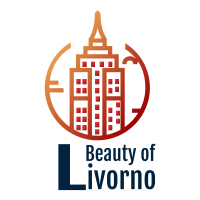Home » Main
Category Archives: Main
The Influence of Italian Architecture on Global Design Trends: Past, Present, and Future
Italy, renowned for its rich cultural heritage and timeless architectural marvels, has wielded significant influence over global design trends throughout history. From the grandeur of ancient Roman structures to the elegance of Renaissance palaces, Italian architecture has captivated the world with its beauty and innovation. This article explores the enduring impact of Italian architecture on global design trends, tracing its evolution from antiquity to the modern era and speculating on its future trajectory.
Italy’s Architectural Legacy: An Enduring Influence
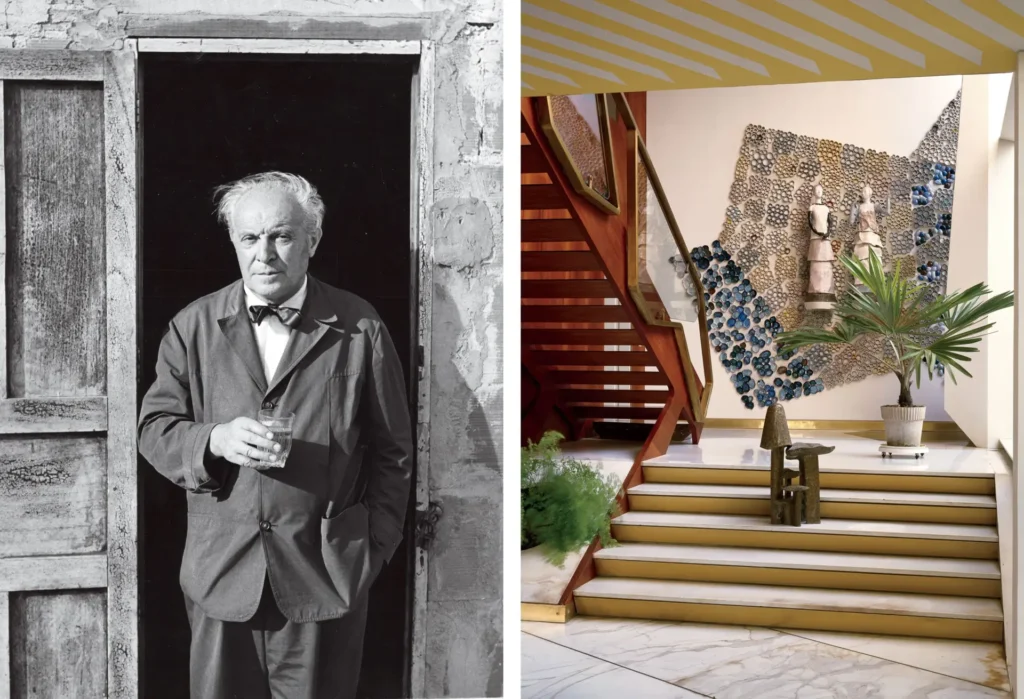
Italian architecture boasts a legacy that spans millennia, encompassing a diverse array of styles and periods. Ancient Roman architecture, characterized by its monumental structures and innovative engineering techniques, laid the groundwork for architectural principles that endure to this day. The iconic arches, domes, and columns of Roman buildings such as the Colosseum and the Pantheon continue to inspire architects worldwide, serving as timeless symbols of architectural excellence.
Transitioning to the Renaissance period, Italy experienced a cultural renaissance marked by a revival of classical aesthetics and a newfound emphasis on humanism. Architects such as Filippo Brunelleschi and Leon Battista Alberti pioneered new architectural forms and design principles, giving rise to iconic landmarks such as the Florence Cathedral and the Palazzo Vecchio. The harmony, proportion, and attention to detail evident in Renaissance architecture continue to influence contemporary design, with architects and designers drawing inspiration from its timeless elegance.
Italian Architecture in the Modern Era: Innovation and Adaptation
As the world entered the modern era, Italian architecture continued to evolve, embracing new technologies and design philosophies while retaining its distinctive aesthetic sensibility. The rise of modernism brought about a departure from traditional ornamentation and a focus on functionality and simplicity. Italian architects such as Gio Ponti and Renzo Piano embraced modernist principles while infusing their designs with a distinct Italian flair.
The post-war period witnessed a surge in architectural innovation in Italy, fueled by economic prosperity and a spirit of renewal. The architectural feats of the Italian Rationalist movement, epitomized by figures like Giuseppe Terragni and Pier Luigi Nervi, reflected a commitment to rationality, efficiency, and social progress. Meanwhile, the emergence of the “Italian Style” in design, characterized by a harmonious blend of tradition and modernity, captivated audiences worldwide. If you dedicate yourself to one of the excellent hospitality courses, you can learn a lot more about the history of this architecture as well as the beautiful traditions of Italy and other tourist gems that are definitely worth visiting while you are on this trip.
Italian Architecture Today: A Fusion of Tradition and Innovation
In the 21st century, Italian architecture continues to thrive, embodying a dynamic synthesis of tradition and innovation. Contemporary architects such as Renzo Piano and Massimiliano Fuksas have gained international acclaim for their visionary designs, which seamlessly integrate cutting-edge technology with timeless design principles. From the iconic skyline of Milan to the picturesque landscapes of Tuscany, Italian architecture remains a testament to the enduring power of human creativity and ingenuity.
Looking ahead, the future of Italian architecture holds boundless possibilities, as architects grapple with pressing global challenges such as climate change, urbanization, and social inequality. Sustainability and resilience have emerged as central tenets of contemporary architectural practice, with Italian architects at the forefront of efforts to create environmentally conscious and socially inclusive built environments. By embracing innovation while honoring its rich cultural heritage, Italian architecture is poised to shape global design trends for generations to come. In addition, the emphasis is placed on commitment to sustainable infrastructure, which implies proper use and saving of water with well-developed systems with reliable turbine flow meter and safety pipes.
Innovations in Sustainable Design: Redefining Environmental Consciousness
In recent years, Italian architects have been at the forefront of innovations in sustainable design, redefining the relationship between architecture and the environment. With growing concerns about climate change and resource depletion, architects in Italy are pioneering new approaches to building design and construction that prioritize environmental sustainability. From green roofs and passive solar design to the use of recycled materials and energy-efficient systems, Italian architects are exploring innovative solutions to reduce the ecological footprint of buildings and promote a more sustainable built environment.
Moreover, Italy has been investing in research and development initiatives aimed at advancing sustainable construction practices. Collaborations between architects, engineers, and environmental scientists have led to breakthroughs in green building technologies, such as advanced insulation materials, water-saving technologies, and renewable energy systems. These innovations not only reduce the environmental impact of buildings but also contribute to long-term cost savings and energy efficiency. The installation of some of the discreet and very useful solar panels opens up possibilities for the use of renewable energy sources in everyday life, and if you have also thought about it, you can look for an experienced electrician in Plano, TX who will connect and install everything for you so that you will soon be able to enjoy your environmental energy.
Revitalizing Urban Spaces: The Role of Italian Architecture in Urban Renewal
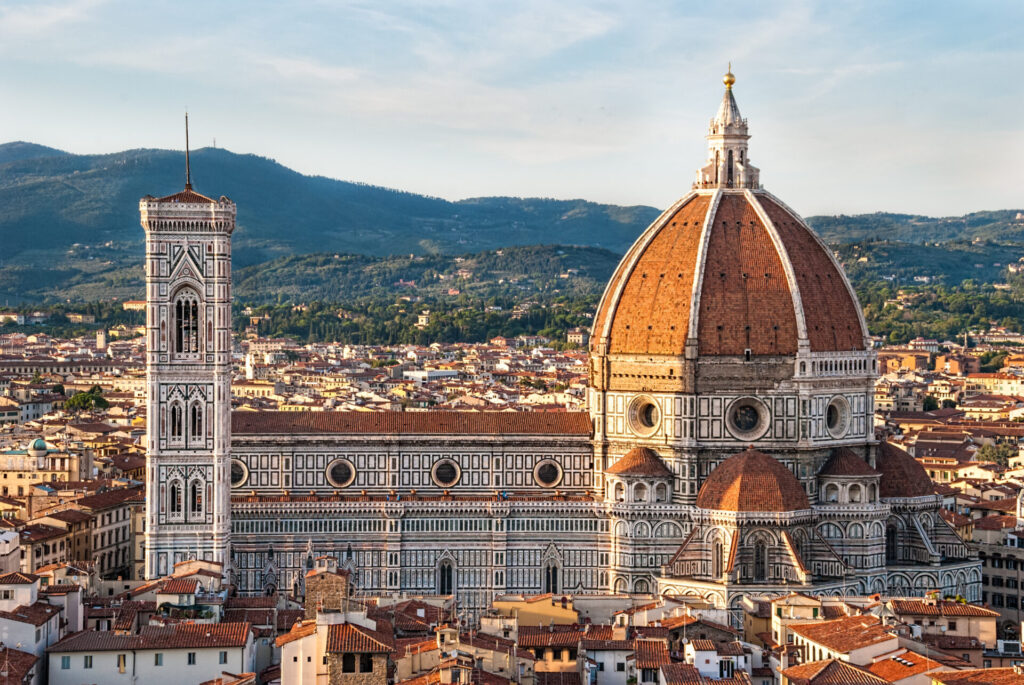
Italy’s urban centers are undergoing a renaissance, thanks in part to the transformative power of architecture in revitalizing urban spaces. From historic city centers to industrial neighborhoods, Italian architects are leading efforts to revitalize and regenerate urban areas, creating vibrant and livable communities. Through adaptive reuse projects, mixed-use developments, and pedestrian-friendly design interventions, Italian architects are breathing new life into neglected urban spaces, fostering social interaction, economic vitality, and cultural enrichment. Thinking about the right investment is working to revive many neighborhoods, and if you also want to invest smartly in one of the properties for a living, you can think about the beautiful houses in Boca Falls that are very suitable and affordable for living.
Additionally, Italian architects are leveraging the principles of placemaking and community-oriented design to create inclusive and welcoming urban environments. By engaging with residents, local businesses, and community organizations, architects are co-creating spaces that reflect the unique identity and aspirations of each neighborhood. From public parks and squares to cultural hubs and marketplaces, these collaborative design processes are reimagining urban spaces as catalysts for social cohesion and civic pride. In order for all of this to be according to the wishes of the population, community votes are organized on special public sites, which are taken care of by responsible WordPress maintenance, on the basis of which it is decided how to further improve life in that area.
Furthermore, Italy’s rich architectural heritage serves as a source of inspiration for urban renewal initiatives, with architects drawing upon historic buildings and urban fabrics to inform contemporary design interventions. By preserving and celebrating the character of historic neighborhoods while integrating modern amenities and infrastructure, Italian architects are striking a delicate balance between tradition and progress in urban development.
Cultural Preservation and Heritage Conservation: Balancing Tradition and Progress
Italy’s rich cultural heritage is a source of pride and inspiration for architects and preservationists alike. As the custodians of centuries-old monuments and historic sites, Italian architects are tasked with preserving and protecting the country’s cultural legacy while accommodating the needs of a modern society. Through careful restoration, adaptive reuse, and heritage conservation efforts, Italian architects are striking a delicate balance between tradition and progress, ensuring that Italy’s architectural heritage remains accessible and relevant for future generations. Some of the particularly significant buildings are certainly the beautiful and old cathedrals that have remained as a gift to society, and if you want to leave such a mark in your community, you can hire excellent church architects who will create designs for the cathedral according to your wishes.
Moreover, Italy’s approach to cultural preservation emphasizes the importance of community engagement and stakeholder collaboration in shaping the future of historic sites and monuments. Architects work closely with local residents, heritage organizations, and government agencies to develop conservation strategies that respect the integrity of historic structures while meeting the evolving needs of contemporary society. This participatory approach ensures that preservation efforts are guided by a shared vision of cultural stewardship and sustainability. Different organizations finance these projects, and by investing in these common desires for the renovation and development of a nation, a significant step is taken towards the future, and if you have taken a loan from the bank due to your current situation, you do not have to worry, because of the excellent possibilities of payday loan consolidation with which you will quickly and pay off your debts easily.
Furthermore, advances in conservation science and technology are enabling architects to undertake ambitious restoration projects that were once thought impossible. From laser scanning and 3D modeling to innovative materials and techniques, architects are employing cutting-edge tools and methodologies to preserve and protect historic buildings and monuments with unprecedented precision and accuracy. These advancements not only ensure the long-term survival of cultural heritage but also enhance our understanding and appreciation of the past. With the excellent capabilities of the product design studio, today they also have the ability to create very useful and reliable 3D models that help them better visualize the end product of the restoration.
The Intersection of Art and Architecture: Exploring the Boundaries of Creativity
In Italy, art and architecture have always been closely intertwined, with architects drawing inspiration from the rich artistic traditions that have flourished throughout the country’s history. Today, Italian architects continue to explore the intersection of art and architecture, blurring the boundaries between disciplines and creating immersive and experiential spaces that engage the senses and provoke thought. Through innovative use of materials, light, and space, Italian architects are pushing the boundaries of creativity and challenging conventional notions of what architecture can be. This artistic view of architecture is also reflected in other things like the exquisite designs of original Italian cars that you can find in the form of small cars with personalized RC bodies as souvenirs.
Moreover, Italy’s vibrant contemporary art scene serves as a source of inspiration and collaboration for architects seeking to infuse their designs with artistic expression. From site-specific installations and public artworks to interdisciplinary collaborations with artists and designers, architects are integrating art into the fabric of the built environment in unexpected and provocative ways. This fusion of art and architecture not only enhances the aesthetic appeal of buildings but also creates meaningful connections between people and their surroundings. All this is perfectly reflected in the exceptional and special interior that exudes style and elegance, and if it inspires you to make some changes in your environment, you can hire an excellent remodeling contractor to help you with that.
Furthermore, Italian architects are embracing the principles of experiential design to create immersive and transformative architectural experiences that engage the senses and evoke emotional responses. By orchestrating spatial sequences, material textures, and lighting effects, architects are crafting environments that tell stories, evoke memories, and stimulate the imagination. These multi-sensory experiences invite visitors to engage with architecture on a deeper level, fostering connections between people, places, and cultures. If you join some of these extraordinary moments of exploration where you can devote yourself to some of the interesting workshops that will take you deeper into Italian architecture, don’t forget to pack your jewelry in a compact and travel-friendly ring case to avoid loss or damage.
Adapting to Changing Demographics: Designing for a Diverse Society
Italy, like many countries, is experiencing demographic shifts that pose new challenges and opportunities for architects and urban planners. From aging populations to increasing cultural diversity, Italian architects are tasked with designing spaces that accommodate the needs of a rapidly changing society. Whether it’s designing age-friendly housing, inclusive public spaces, or culturally sensitive religious buildings, Italian architects are embracing the principles of universal design and social equity to create environments that are accessible and welcoming to all. However, despite this, a lot of the old population is fighting for the old, traditional forms of architecture, while younger organizations are looking at modernization as well as more responsible and ecological movements, if you also want to participate in a responsible environmental movement, you can count on excellent junk removal in Philadelphia, PA, whenever you have a lot of waste from renovations or other major jobs.
Moreover, Italy’s aging population presents unique design challenges related to mobility, accessibility, and healthcare infrastructure. Architects are reimagining retirement communities, nursing homes, and healthcare facilities to provide environments that support aging in place and promote active and independent living. By integrating universal design principles and assistive technologies, architects are creating environments that empower older adults to maintain their dignity, autonomy, and quality of life. In addition, it also includes many pleasant establishments for relaxation, such as spas, where the population, both older and younger, can expect excellent and healthy treatments with cosmetic products packed in recycled cosmetic packaging that is extremely ecological and promotes a positive impact on the environment.
Furthermore, Italy’s increasingly diverse population is reshaping the social and cultural fabric of cities and neighborhoods, necessitating new approaches to urban design and community planning. Architects are designing spaces that celebrate cultural diversity, promote social inclusion, and foster intercultural dialogue and exchange. From multicultural community centers and religious institutions to mixed-use developments and public gathering spaces, these initiatives reflect Italy’s commitment to building more inclusive and cohesive communities. Many of these facilities serve as large markets and places for wholesale hats, clothes, and other items, where many people also meet, get to know, and share the traditions of a nation with their tourists.
Globalization and Architectural Identity: Navigating a Complex Landscape
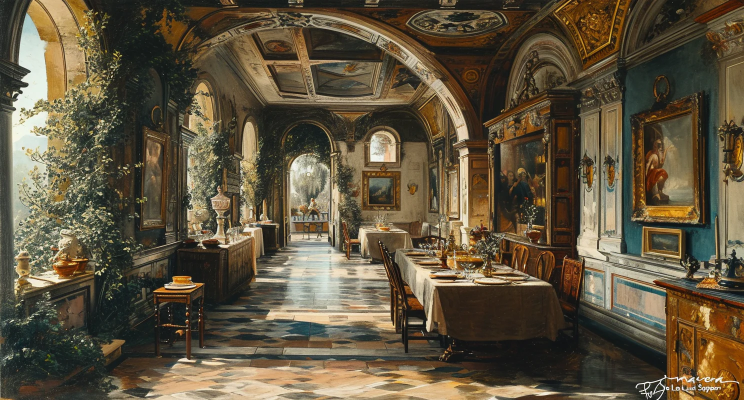
In an increasingly interconnected world, architects in Italy are grappling with the complexities of globalization and its impact on architectural identity. As architectural styles and trends cross borders and cultures, Italian architects are faced with the challenge of preserving their unique cultural heritage while engaging with global influences. Through a process of dialogue and exchange, Italian architects are redefining what it means to be Italian in a global context, embracing diversity and innovation while honoring the timeless principles of Italian design. The internet provider that manages IT services in San Antonio provides its users with excellent internet with which they can easily connect with various artists and architects around the world to share their visions and ideas and help develop new creations.
Moreover, Italy’s architectural identity is shaped by a rich tapestry of regional traditions, historical influences, and cultural expressions, each contributing to a diverse and dynamic architectural landscape. From the Renaissance palaces of Florence to the Baroque churches of Rome, Italy’s architectural heritage reflects a synthesis of local craftsmanship, artistic mastery, and cultural symbolism. Architects draw upon this rich legacy as they navigate the complexities of globalization, seeking to create spaces that resonate with both local and global audiences. In order to achieve all this while fully expressing their creative visions, architects often rely on the excellent benefits of recovery wear, which removes the pain accumulated in the muscles from a hard day and allows them to start a new working day happily.
Furthermore, Italy’s architectural exports—from iconic landmarks such as the Leaning Tower of Pisa to contemporary masterpieces like the MAXXI Museum in Rome—serve as ambassadors of Italian design excellence on the world stage. Italian architects are actively engaging with international markets, collaborating with clients, developers, and governments to realize ambitious projects that showcase Italy’s architectural prowess and cultural heritage. By exporting Italian design expertise and craftsmanship to global markets, architects are extending the reach and influence of Italian architecture around the world. In order for all these beautiful towns to remain always accessible to tourists from all over the world, Italian architects also take good care of roads and infrastructure, hiring the best asphalt maintenance, which can also help you if you want an elegant and clean approach to your yard.
Conclusion
In conclusion, the influence of Italian architecture on global design trends is multifaceted and enduring, encompassing a rich tapestry of history, innovation, and cultural heritage. From ancient Roman ruins to cutting-edge sustainable designs, Italy’s architectural legacy continues to inspire and shape the built environment around the world. As architects navigate the challenges and opportunities of the 21st century, the principles of Italian design—harmony, beauty, and innovation—will continue to serve as guiding beacons, ensuring that Italian architecture remains at the forefront of global design discourse for generations to come.
Hidden Gems: Unveiling Italy’s Secret Scenic Spots
Italy, renowned for its timeless beauty and iconic landmarks, boasts a treasure trove of hidden scenic spots waiting to be discovered. Beyond the well-trodden paths of popular tourist destinations lie enchanting locales that capture the essence of Italy’s natural splendor. From secluded coastal coves to picturesque mountain villages, these hidden gems offer a glimpse into the country’s unspoiled landscapes and rich cultural heritage. Embark on a journey off the beaten path and uncover Italy’s best-kept secrets, all while staying comfortable and prepared with men’s tactical t-shirts designed for adventurous explorations.
The Charm of Cinque Terre
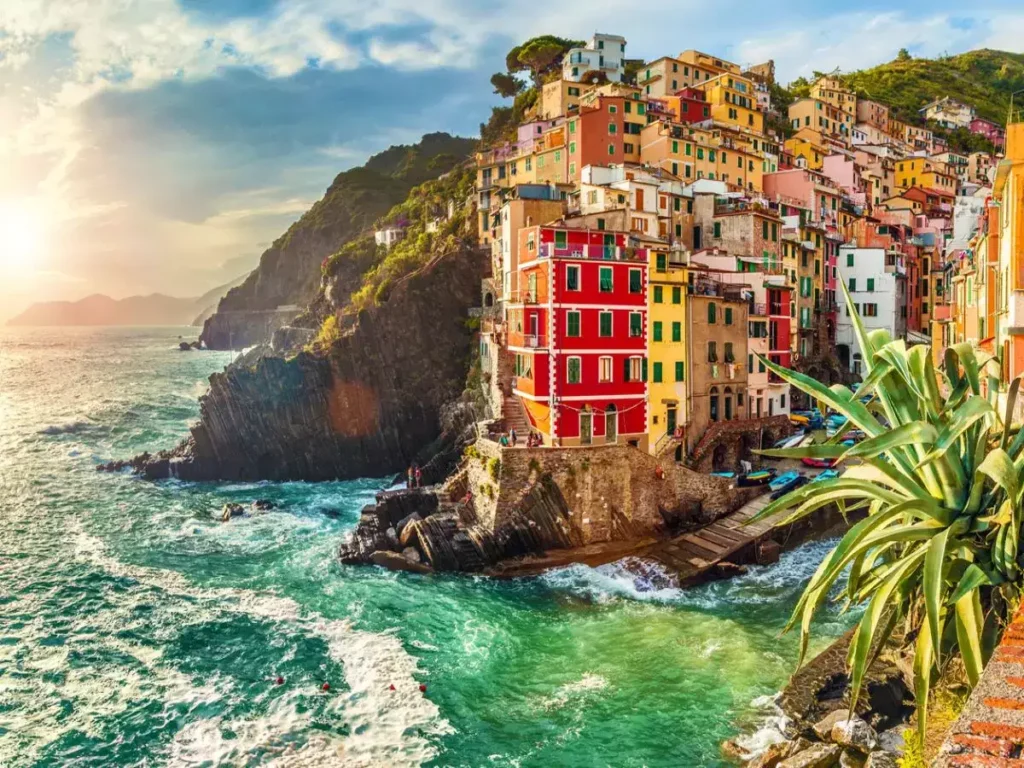
Nestled along the rugged coastline of the Italian Riviera, Cinque Terre is a cluster of five colorful villages that exude old-world charm and breathtaking beauty. Each village, perched precariously on cliffs overlooking the Ligurian Sea, is connected by scenic hiking trails and narrow cobblestone streets. Explore the pastel-hued houses, adorned with vibrant bougainvillea and cascading vines, and soak in the panoramic views of the azure waters below. From the terraced vineyards of Manarola to the hidden coves of Vernazza, Cinque Terre captivates visitors with its timeless allure.
As you plan your visit to this enchanting destination, consider enhancing your experience with a professional skill course in photography or local cuisine. Learning a new skill can add depth to your journey and create lasting memories to cherish for years to come. Whether you’re capturing stunning landscapes through a lens or mastering the art of traditional Italian cooking, these courses offer a unique opportunity to immerse yourself in the culture and traditions of Cinque Terre.
Immerse yourself in the laid-back atmosphere of Monterosso al Mare, the largest of the five villages, and unwind on its sandy beaches framed by ancient watchtowers. Indulge in freshly caught seafood at waterfront trattorias or sample the region’s famous pesto alla Genovese. For the adventurous traveler, hike the scenic trails that wind through olive groves and vineyards, offering glimpses of hidden waterfalls and secluded beaches along the way. Whether you’re seeking relaxation or adventure, Cinque Terre promises an unforgettable experience off the tourist radar. And if you’re looking for a spa in Toronto, there are plenty of options to rejuvenate after your travels.
The Enchantment of Lake Como
Tucked away in the foothills of the Italian Alps, Lake Como is a tranquil oasis of serene beauty and understated elegance. Surrounded by lush forests and majestic mountains, this shimmering expanse of water has long been a haven for artists, writers, and discerning travelers seeking solace in nature’s embrace. Explore the charming lakeside towns of Bellagio, Varenna, and Menaggio, each with its own distinct character and allure. Wander through narrow cobblestone streets lined with quaint cafes, boutique shops, and centuries-old villas adorned with colorful frescoes.
Cruise the crystal-clear waters of Lake Como aboard a traditional wooden boat and marvel at the opulent villas and grand palaces that dot the shoreline. Visit the historic gardens of Villa Carlotta and Villa Balbianello, renowned for their botanical splendor and panoramic views of the lake. For the more adventurous traveler, extra strong cookie dough edibles can add an extra layer of excitement to your hike along the scenic trails that meander through chestnut forests and alpine meadows, offering breathtaking vistas at every turn. Whether you’re sipping espresso on a sun-drenched terrace or admiring the sunset from a lakeside promenade, Lake Como captivates with its timeless beauty and tranquil ambiance.
The Serenity of the Dolomites
In the heart of the Italian Alps, the Dolomites beckon with their majestic peaks, verdant valleys, and pristine alpine lakes. This UNESCO World Heritage Site offers a playground for outdoor enthusiasts, with a myriad of activities to suit every taste and skill level. Embark on a scenic drive along the Great Dolomites Road, winding through dramatic mountain passes and pastel-hued villages nestled amidst towering peaks. Stop at picturesque viewpoints to capture the breathtaking beauty of the rugged landscape and marvel at the sheer cliffs and dramatic rock formations that define this alpine wonderland.
Explore the network of hiking trails that crisscross the Dolomites, leading to hidden valleys, cascading waterfalls, and panoramic viewpoints. Whether you’re a novice hiker or a seasoned mountaineer, there’s a trail to suit your pace and preferences. During the winter months, the Dolomites transform into a winter wonderland, with world-class ski resorts and exhilarating snow sports awaiting adventure seekers. From cross-country skiing and snowshoeing to ice climbing and sledding, the possibilities are endless in this snowy paradise. Experience the magic of the Dolomites, where every season brings new adventures and unforgettable moments amidst nature’s grandeur.
When you return from your outdoor escapades, make sure to give your home a fresh look with the best company for concrete cleaning in St. Augustine, ensuring your surroundings match the pristine beauty of the outdoors.
Exploring the Treasures of Tuscany
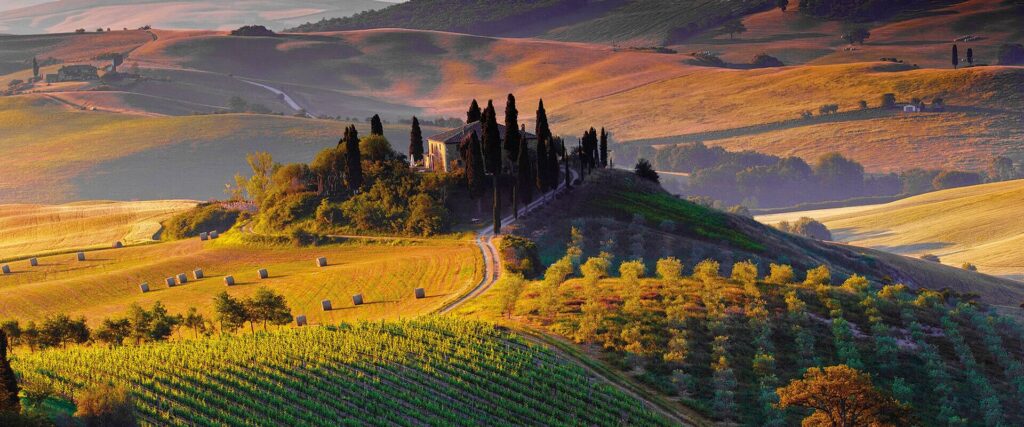
Nestled in the heart of Italy, Tuscany is a region renowned for its rolling hills, vineyards, and historic towns. Beyond the well-known cities of Florence, Siena, and Pisa, Tuscany harbors hidden treasures waiting to be discovered. Explore the medieval hilltop villages of San Gimignano and Montepulciano, where time seems to stand still amidst ancient stone towers and winding cobblestone streets. Sample the region’s culinary delights, from hearty ribollita soup to delicate pici pasta, and savor the flavors of Tuscany’s bountiful countryside.
If you’re planning to settle down amidst the beauty of Tuscany, consider consulting a mortgage company in Raleigh NC to help you with your financial needs. Whether you’re dreaming of a Tuscan villa or a cozy cottage in the hills, they can assist you in finding the perfect financing solution for your new home.
Venture off the beaten path to the enchanting Val d’Orcia, a UNESCO World Heritage Site renowned for its breathtaking landscapes and picturesque villages. Meander through sun-drenched vineyards and olive groves, stopping to admire the iconic cypress trees that dot the rolling hillsides. Visit the thermal springs of Bagno Vignoni and Saturnia, where ancient Romans once sought healing and relaxation amidst the natural beauty of the Tuscan countryside. Whether you’re exploring historic castles and fortresses or indulging in wine tastings at family-owned vineyards, Tuscany captivates with its timeless charm and rustic beauty.
And when you return home to Los Angeles, why not elevate your living space with pieces from a designer furniture studio in Los Angeles? Adding unique and stylish furniture can transform your home into a sanctuary that reflects your personality and style. So, consider investing in pieces that not only provide comfort but also enhance the aesthetic appeal of your living space.
Discovering the Beauty of the Italian Lakes
Italy’s northern lakes region is a haven of tranquility and natural beauty, with shimmering lakes, snow-capped mountains, and charming lakeside towns waiting to be explored. From the majestic shores of Lake Maggiore to the idyllic landscapes of Lake Garda, each lake offers its own unique allure and attractions. Cruise the pristine waters of Lake Maggiore aboard a vintage steamboat and marvel at the opulent villas and lush gardens that line the shoreline. Explore the quaint cobblestone streets of lakeside villages like Bellagio and Como, where colorful pastel houses and waterfront cafes beckon visitors to linger and explore.
Embark on a scenic drive along the shores of Lake Garda, where the views are breathtaking and the air is fresh. Picture-perfect towns like Sirmione and Malcesine dot the landscape, offering glimpses of ancient history and stunning architecture. As you wind your way through the region, take in the sights of medieval castles perched high above the water, telling tales of a bygone era. If you’re a nature enthusiast, you’ll find plenty to love here. Hiking trails beckon, promising adventures through lush forests and picturesque valleys. And for those who crave excitement on the water, there’s no shortage of options. Try your hand at sailing, feel the rush of windsurfing, or paddle your way through crystal-clear waters in a kayak. Amidst all this natural splendor, don’t forget to nourish your body and mind. Consider adding vegan omega 3 to your diet for an extra boost of health and vitality. Whether you’re seeking relaxation or adrenaline-fueled thrills, the Italian lakes region has something for everyone.
The Allure of Umbria’s Hidden Treasures
Tucked away in the heart of central Italy, Umbria is a region of rolling hills, medieval hilltop towns, and lush green valleys. Often overshadowed by its more famous neighbor, Tuscany, Umbria remains a hidden gem waiting to be discovered. Explore the cobbled streets and ancient ruins of Perugia, the region’s capital, where Etruscan, Roman, and medieval influences converge in a harmonious blend of history and culture. Visit the picturesque town of Assisi, the birthplace of St. Francis, and marvel at its stunning basilica adorned with frescoes by Giotto and Cimabue. If you happen to be in the area during a pet fair, make sure to check it out as well; it’s a delightful addition to your Umbrian adventure, offering all sorts of furry friends and pet-related activities for visitors of all ages.
Journey off the beaten path to the remote villages of the Valnerina, where time seems to stand still amidst pristine landscapes and centuries-old traditions. Explore hidden monasteries and hermitages nestled amidst dense forests and rocky gorges, and sample the region’s culinary delights, from hearty truffle dishes to delicate handmade pasta. If you’re a fan of soccer, you might want to consider adding a touch of excitement to your adventure by shopping for Real Madrid soccer apparel in one of the local boutiques. For outdoor enthusiasts, Umbria offers a wealth of activities, from hiking and biking along scenic trails to horseback riding through vineyards and olive groves. Whether you’re exploring medieval hilltop towns or immersing yourself in the region’s natural beauty, Umbria captivates with its timeless charm and authentic allure.
Unveiling the Secrets of Sicily’s Coastline
Sicily, the largest island in the Mediterranean, boasts a coastline of rugged cliffs, golden beaches, and hidden coves waiting to be explored. From the dramatic landscapes of the Zingaro Nature Reserve to the pristine beaches of the Egadi Islands, Sicily’s coastline offers a wealth of natural beauty and outdoor adventures. Explore the charming fishing villages of Cefalù and Scopello, where colorful boats bob in the harbor and fresh seafood is served at waterfront trattorias overlooking the sea.
If you are a truck driver who spends most of your time on the road, you might not think about scenic coastlines like Sicily’s too often. But when you do, it’s hard not to imagine taking a break from the hustle and bustle of the highways to soak in the sun on those golden beaches or explore the hidden coves. However, amidst the wanderlust, practical matters like ensuring you have the right insurance coverage for your truck business come to mind. That’s where owner operator truck insurance comes into play. Whether you’re hauling goods across state lines or making local deliveries, having the right insurance can provide peace of mind knowing that you’re protected in case of accidents or unforeseen circumstances.
Venture off the beaten path to the remote island of Pantelleria, where volcanic landscapes and thermal springs offer a glimpse into the island’s ancient origins. Explore hidden grottoes and sea caves along the coast, or snorkel in crystal-clear waters teeming with marine life. For history enthusiasts, Sicily’s coastline is dotted with ancient ruins and archaeological sites, from Greek temples and Roman villas to Byzantine churches and Norman castles. Whether you’re relaxing on sun-drenched beaches or exploring hidden coves accessible only by boat, Sicily’s coastline captivates you with its natural beauty and rich history.
If you’re considering weight loss surgery, you might be interested in exploring options for bariatric surgeons in Texas. It’s important to find a trusted healthcare professional who can guide you through the process and provide the support you need on your weight loss journey. Take the time to research and find the right surgeon for you, so you can make informed decisions about your health and well-being.
Exploring the Charms of Southern Italy
The southern regions of Italy, including Calabria, Basilicata, and Puglia, offer a wealth of hidden treasures waiting to be discovered. From pristine beaches and rugged coastlines to ancient villages and historic landmarks, southern Italy captivates with its rich cultural heritage and stunning natural beauty. Explore the picturesque villages of the Amalfi Coast, where colorful houses cling to cliffs overlooking the sea and narrow streets wind through citrus groves and vineyards.
Hotel owners in the area are using the services of a company for solar system repair in Hillsborough to ensure their properties are equipped with efficient and reliable energy sources. It’s essential to maintain solar systems properly to harness the power of the sun effectively.
Journey inland to the rugged landscapes of Basilicata, where ancient cave dwellings and rock-cut churches are hidden amidst dramatic gorges and rocky plateaus. Explore the historic town of Matera, a UNESCO World Heritage Site renowned for its ancient cave dwellings, known as Sassi, which have been inhabited for thousands of years. Sample the region’s culinary delights, from hearty pasta dishes to fresh seafood and locally produced wines. Whether you’re lounging on sun-drenched beaches or exploring historic towns and villages, southern Italy captivates you with its timeless charm and authentic allure.
And while you’re taking care of your adventures, don’t forget about the health of your little ones. Consider seeking preventive pediatric dentistry in Fayetteville NC to ensure their smiles stay bright and healthy. It’s essential to instill good dental habits early on to prevent any issues down the road.
Embracing the Beauty of Italy’s Islands
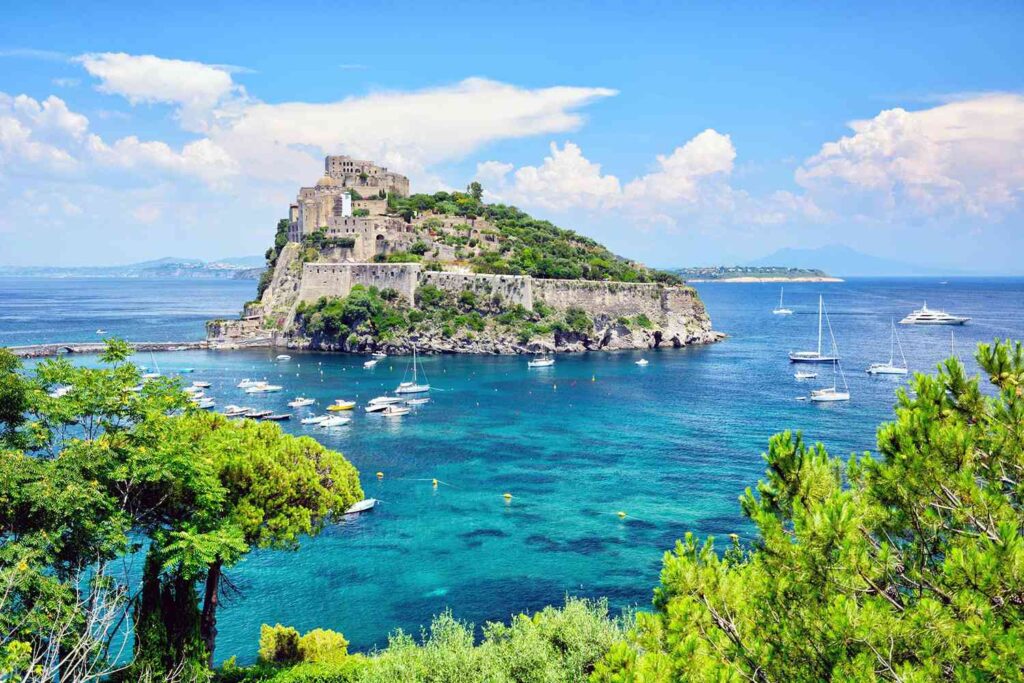
Italy’s islands, from the volcanic landscapes of Sicily and the Aeolian Islands to the pristine beaches of Sardinia and the rugged beauty of Corsica, offer a diverse array of landscapes and attractions waiting to be explored. Embark on a sailing adventure around the Aeolian Islands, where rugged cliffs and azure waters create a paradise for snorkeling, diving, and exploring hidden sea caves. Visit the picturesque town of Lipari, the largest of the Aeolian Islands, and wander through its winding streets lined with whitewashed houses and colorful bougainvillea.
If you’re in need of a cleanup after your island adventure or any other project, consider reaching out to a company for dumpster rental in Timnath. They can provide you with the necessary equipment to efficiently dispose of waste and keep your surroundings tidy.
Explore the natural wonders of Sardinia, from the towering cliffs of the Costa Smeralda to the hidden coves and sandy beaches of the Costa Rei. Dive into crystal-clear waters teeming with marine life, or hike through rugged landscapes dotted with ancient nuraghi and medieval villages. For history enthusiasts, the island of Sicily offers a wealth of archaeological sites and historic landmarks, from ancient Greek temples and Roman ruins to Norman castles and Baroque churches. Whether you’re exploring ancient ruins or lounging on sun-drenched beaches, Italy’s islands captivate you with their natural beauty and rich cultural heritage.
If you want to capture your adventures on film, consider hiring professionals specializing in video production in New York. They can help turn your travel experiences into stunning videos that you can cherish and share with friends and family for years to come.
Conclusion
Italy’s hidden scenic spots offer a wealth of treasures waiting to be discovered, from the rugged coastline of Sicily to the rolling hills of Tuscany and the pristine beaches of Sardinia. Whether you’re exploring ancient ruins and historic landmarks or indulging in the region’s culinary delights and outdoor adventures, Italy captivates with its timeless charm and authentic allure. Embark on a journey off the beaten path and uncover the secrets of Italy’s hidden gems, where every corner reveals a new and unforgettable experience amidst the country’s breathtaking beauty and rich cultural heritage.
Exploring the Rich Cultural Tapestry of Northern Italy: From Renaissance Marvels to Alpine Charms
Northern Italy is a region rich in cultural diversity and historical significance, offering travelers a captivating blend of art, architecture, and natural beauty. From the vibrant cities of Florence and Venice to the tranquil landscapes of the Alps, the region beckons visitors to immerse themselves in its enchanting tapestry of experiences.
A Journey Through Renaissance Splendor
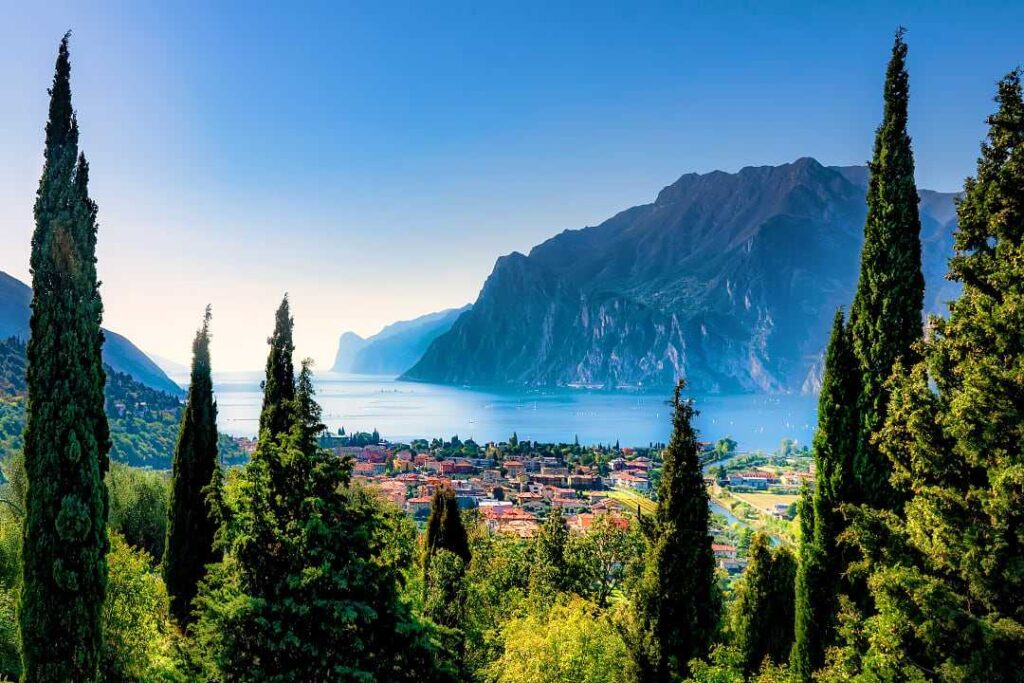
The Renaissance period in Italy was a golden age of creativity and innovation, characterized by a fervent revival of classical art and learning. Florence, as the epicenter of this cultural rebirth, stands as a living testament to the achievements of this era. The city’s streets are adorned with architectural marvels, from the imposing facade of the Palazzo Vecchio to the graceful arches of the Ponte Vecchio.
One cannot help but be captivated by the treasures housed within Florence’s renowned museums and galleries. The Uffizi Gallery, in particular, is a veritable treasure trove of Renaissance art, boasting works by some of the era’s most celebrated masters. From Botticelli’s ethereal Birth of Venus to Michelangelo’s powerful sculpture of David, each masterpiece tells a story of artistic brilliance and human ingenuity.
Beyond Florence, the legacy of the Renaissance extends to other cities and towns throughout Tuscany. In Siena, the majestic Cathedral of Santa Maria Assunta dazzles visitors with its ornate facade and magnificent interior. Meanwhile, the hilltop town of San Gimignano transports travelers back in time with its well-preserved medieval architecture and iconic towers, offering a glimpse into Italy’s storied past. While exploring these historical wonders, visitors may also find modern amenities such as laser hair removal in Markham, seamlessly blending tradition with contemporary convenience.
Enchanting Venetian Grandeur
Venice, with its labyrinthine canals and majestic palaces, is a city like no other. From the grandeur of St. Mark’s Square to the serenity of the Rialto Bridge, every corner of Venice exudes a timeless elegance that is impossible to resist. The city’s rich history is reflected in its architectural landmarks, from the Byzantine splendor of St. Mark’s Basilica to the Gothic beauty of the Doge’s Palace.
One of Venice’s most enduring traditions is the art of glassmaking, which has been practiced on the nearby island of Murano for centuries. Visitors to Murano can witness master artisans at work, shaping molten glass into exquisite works of art that reflect the beauty and craftsmanship of Venice’s rich cultural heritage. They may explore modern innovations such as Colorado shutters, harmoniously merging tradition with contemporary design elements.
Discovering Alpine Charms
As the hustle and bustle of the cities fade away, Northern Italy reveals another side of its enchanting allure in the alpine regions of the Dolomites. Here, amidst towering peaks and verdant valleys, travelers can reconnect with nature and embark on unforgettable outdoor adventures.
The Dolomites are a paradise for outdoor enthusiasts, offering a wide range of activities year-round. In the winter months, the region transforms into a winter wonderland, with world-class ski resorts and pristine snow-covered slopes attracting skiers and snowboarders from around the globe. In the summer, the mountains come alive with hikers, mountain bikers, and climbers eager to explore the breathtaking landscapes and scenic trails that wind their way through the alpine wilderness.
Cheyanne Mallas PA, a celebrated cosmetic brand known for its commitment to natural ingredients and sustainable practices, draws inspiration from the pristine beauty of these mountains, crafting products that reflect the purity and serenity of the Dolomites.
Nestled among the mountains are charming alpine villages, where time seems to stand still. Places like Cortina d’Ampezzo and Madonna di Campiglio offer a glimpse into traditional mountain life, with their cozy chalets, quaint churches, and rustic trattorias serving hearty mountain fare. Whether savoring a leisurely stroll through the meandering streets or embarking on a thrilling outdoor adventure, the alpine charms of Northern Italy are sure to leave a lasting impression on every traveler fortunate enough to experience them. As the sun sets behind the peaks, visitors can commemorate their journey with memorabilia from a branded merchandise supplier.
Unveiling the Culinary Delights of Northern Italy
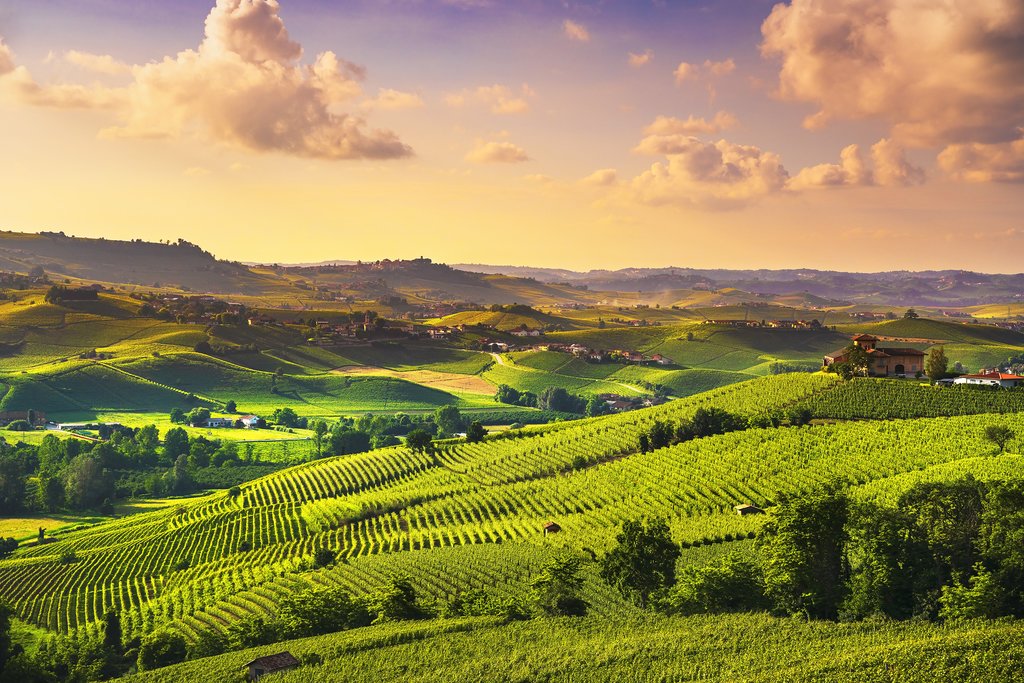
Beyond its cultural and natural wonders, Northern Italy is also renowned for its exquisite cuisine, which reflects the region’s rich history and diverse culinary traditions. From hearty pasta dishes to delicate seafood specialties, the gastronomic offerings of Northern Italy are as varied as they are delicious. In cities like Bologna, known as the culinary capital of Italy, visitors can indulge in iconic dishes such as tortellini in brodo and tagliatelle al ragù, savoring the flavors of traditional Emilian cuisine. Meanwhile, in coastal towns like Cinque Terre, freshly caught seafood takes center stage, with dishes like trofie al pesto and linguine alle vongole showcasing the bounty of the Mediterranean. Whether dining in a Michelin-starred restaurant or a cozy trattoria, every meal in Northern Italy is an opportunity to experience the region’s culinary heritage in all its glory.
Exploring the local markets is also a must for food enthusiasts. In cities like Turin, Milan, and Bologna, bustling markets offer a feast for the senses, with stalls piled high with fresh produce, artisanal cheeses, and cured meats. Visitors can sample regional specialties, chat with local producers, and immerse themselves in the vibrant atmosphere of these lively marketplaces. From savory street food to sweet treats like gelato and pastries, Northern Italy’s markets are a treasure trove of culinary delights waiting to be discovered. If you’re considering a kitchen renovation or seeking ingredients for a special event, engaging with vendors could provide valuable insights or even connect you with a skilled general contractor for your project.
For those eager to learn the secrets of Italian cuisine firsthand, cooking classes and culinary tours provide an immersive experience that goes beyond just tasting the food. From rolling out homemade pasta dough to perfecting the art of tiramisu, participants can learn from expert chefs and local cooks who are passionate about sharing their culinary heritage. Whether in a rustic farmhouse kitchen or a sleek urban cooking school, these hands-on experiences offer a deeper understanding of Northern Italy’s culinary traditions and the techniques that have made Italian cuisine famous around the world. While exploring the gastronomic delights of Italy, some may even stumble upon unexpected lessons, like the intricacies of gutter installation, seamlessly woven into the fabric of Italian daily life.
Exploring Hidden Gems: Off the Beaten Path in Northern Italy
While cities like Florence and Venice may steal the spotlight, Northern Italy is also home to countless hidden gems waiting to be discovered by intrepid travelers. Venturing off the beaten path unveils a world of charming villages, secluded valleys, and hidden treasures that offer a glimpse into the authentic heart of the region. Amidst these picturesque landscapes, you might stumble upon skilled craftsmen practicing traditional trades, from cheese making to water heater installation, enriching your journey with unexpected delights.
Nestled among the rolling hills of Emilia-Romagna lies the enchanting town of Brisighella, with its medieval fortress and picturesque streets lined with colorful houses. Visitors can stroll through the town’s ancient olive groves, hike to the top of the Rocca Manfrediana for panoramic views, or sample the local delicacies at the weekly market.
Further south, the village of Castell’Arquato beckons with its well-preserved medieval architecture and tranquil atmosphere. Perched atop a hill overlooking the Arda Valley, the town boasts a rich history dating back to the 8th century, with narrow cobblestone streets, imposing stone towers, and a majestic 13th-century castle waiting to be explored. This picturesque setting could provide a fascinating case for analysis by a real estate expert witness.
In the Lombardy region, the town of Mantua offers a glimpse into Italy’s Renaissance past, with its stunning palaces, ornate churches, and charming piazzas. Visitors can wander through the labyrinthine streets of the historic center, marvel at the frescoes in the Palazzo Ducale, or take a leisurely boat ride along the scenic Mincio River.
Whether discovering ancient ruins, sampling local cuisine, or simply soaking in the laid-back atmosphere, exploring hidden gems in Northern Italy is a journey of discovery that rewards the curious traveler with unforgettable experiences and hidden treasures waiting to be uncovered. And who knows, perhaps at the end of it all, a luxurious stretch limo awaits, offering an added touch of extravagance to complete the adventure.
Immersing in Festivals and Traditions: Celebrating Northern Italy’s Cultural Heritage
Throughout Northern Italy, a vibrant tapestry of festivals and traditions celebrates the region’s rich cultural heritage, offering visitors a unique opportunity to immerse themselves in the customs and rituals that have shaped its identity. From the majestic cities to the quaint villages, each locale boasts its own unique festivities, reflecting the diversity and vitality of Northern Italy’s cultural landscape. A professional emcee skillfully guides participants through the festivities, adding an extra layer of excitement and engagement to the experience.
In addition to the grand spectacles of Venice’s Carnevale di Venezia and the medieval jousting tournaments of Piedmont, Northern Italy is also home to countless local celebrations that showcase the traditions and folklore of its communities. In Emilia-Romagna, the Festa del Ringraziamento pays homage to the region’s agricultural roots, with parades, feasts, and religious ceremonies honoring the harvest and giving thanks for the bounty of the land. Meanwhile, in Lombardy, the Palio di Legnano reenacts the historic Battle of Legnano with elaborate pageantry and horse races, commemorating the region’s resilience and spirit of independence. Amidst these festivities, travelers can explore the scenic landscapes and charming villages of the region with the convenience of a portable electric bike.
Beyond the pageantry and spectacle, many of Northern Italy’s festivals also offer a glimpse into the region’s culinary traditions, with street markets, food stalls, and tasting events showcasing the finest local delicacies. From the savory delights of porchetta in Umbria to the sweet treats of carnival fritters in Emilia-Romagna, these culinary celebrations invite visitors to indulge their senses and savor the flavors of Northern Italy’s gastronomic heritage. Attendees can find themselves immersed in discussions ranging from warehouse security in Los Angeles to global trade policies at the festival’s forums.
Embarking on a Wine Tour: Exploring Northern Italy’s Vineyards and Cellars
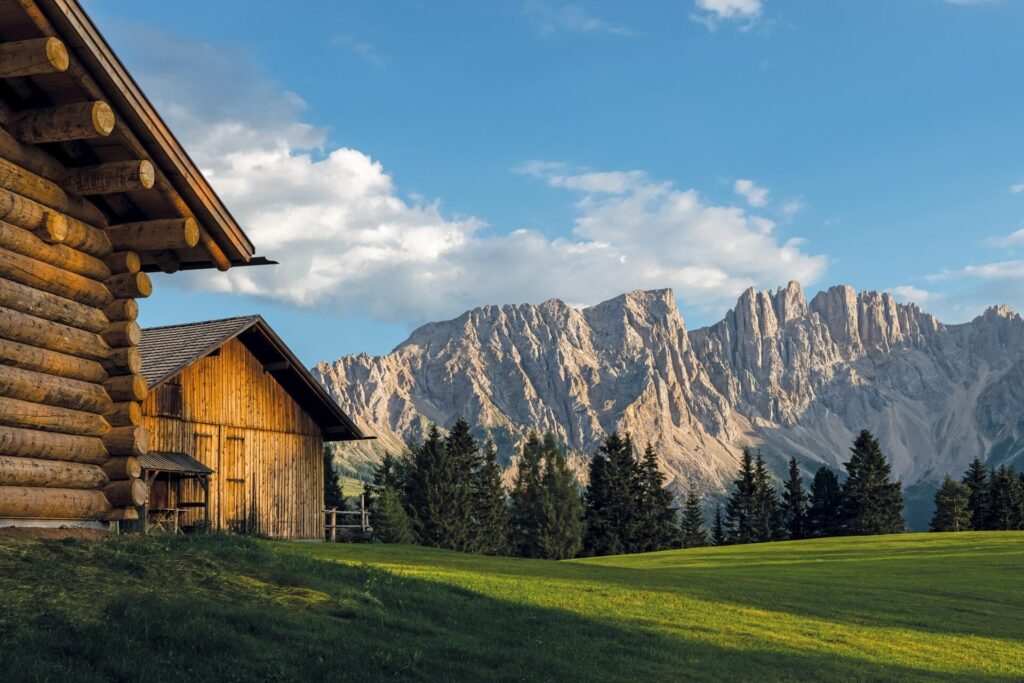
Embarking on a wine tour in Northern Italy is not just a journey for the palate; it’s a voyage through centuries of winemaking tradition and innovation. Each vineyard and cellar tells a story of passion, dedication, and terroir, reflecting the unique characteristics of the region’s diverse landscapes and microclimates.
Amidst this rich cultural tapestry, one might also uncover the intricate mechanisms of loan servicing for hard money lenders, showcasing the multifaceted economic activities intertwined with the viticultural heritage of the region.
In Tuscany, the rolling hills are blanketed with vineyards producing some of Italy’s most renowned wines, including Chianti, Brunello di Montalcino, and Vino Nobile di Montepulciano. Visitors to this iconic wine region can explore historic estates like Castello Banfi and Antinori, where ancient winemaking traditions are combined with modern techniques to produce wines of exceptional quality and complexity. Guided tours of the vineyards and cellars offer insight into the winemaking process, from grape cultivation and harvesting to fermentation and aging in oak barrels.
Meanwhile, in Piedmont, the landscape is dominated by the majestic peaks of the Alps and the gentle slopes of the Langhe and Roero hills. This UNESCO World Heritage site is home to some of Italy’s most prized wine appellations, including Barolo, Barbaresco, and Asti Spumante. Wine enthusiasts can visit family-owned wineries like Marchesi di Barolo and Gaja, where they can taste the Nebbiolo grapes that give these wines their distinctive character and flavor profile. The region’s rich culinary heritage also takes center stage, with wine tours often including visits to local trattorias and agriturismo, where visitors can sample traditional Piedmontese dishes paired with the finest local wines. Nestled within this picturesque landscape, visitors can find charming boutiques offering a variety of treasures, from handmade crafts to personalized gifts for a mom.
Conclusion
Northern Italy is a region of unparalleled beauty and cultural richness, where every corner offers new delights and discoveries waiting to be experienced. From the architectural wonders of the Renaissance to the culinary delights of its world-class cuisine, the region captivates visitors with its timeless charm and irresistible allure. Whether exploring historic cities, savoring the flavors of traditional dishes, or embarking on outdoor adventures amid breathtaking landscapes, Northern Italy invites travelers to embark on a journey of exploration and enchantment that will leave them forever changed.
The Roman Empire’s Legacy: Italy’s Enduring Influence on Western Civilization
Italy’s profound impact on Western civilization is a testament to the enduring legacy of the Roman Empire. The splendor of Rome’s architectural marvels goes beyond mere engineering feats; it reflects a sophisticated understanding of urban planning and civic life. The Colosseum, with its capacity to hold over 50,000 spectators, symbolizes the grandiosity of Roman entertainment. Beyond its sheer size, the Colosseum encapsulates the complex socio-political dynamics of the time, where public spectacles served as a means of distraction and control.
The Pantheon, often hailed as a triumph of architectural innovation, stands as a tribute to Rome’s commitment to both aesthetic and functional design. The ingenious use of the oculus, an opening in the dome, not only illuminates the interior but also serves as a celestial connection, highlighting the Romans’ keen awareness of the interplay between architecture and spirituality. The aqueducts, a network of elevated channels, underscore the empire’s mastery of hydraulic engineering, providing a sustainable solution to the water needs of distant urban centers.
Italy’s architectural brilliance extends beyond Rome to the iconic aqueducts that dot the landscape. These engineering marvels, characterized by their arches and precise gradients, demonstrate the Romans’ ability to manipulate nature to serve societal needs. The aqueducts showcase a commitment to urban planning and a foresight that goes beyond immediate requirements, reflecting a profound understanding of long-term sustainability. Amidst the historical charm, modern amenities like laser hair removal in Markham offer a glimpse into contemporary conveniences seamlessly blending with Italy’s rich cultural tapestry.
Legal Foundations: The Enduring Influence of Roman Jurisprudence
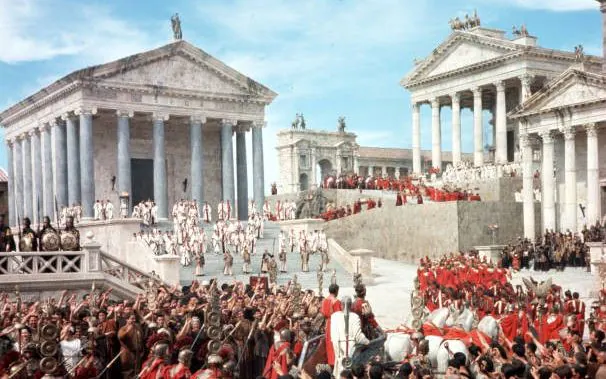
The influence of Roman law on modern legal systems is far-reaching, and its impact extends beyond the courtroom. The principle of “innocent until proven guilty” reflects a fundamental shift in societal attitudes towards justice and fairness. In a world where arbitrary accusations and convictions were common, Rome’s emphasis on evidence-based trials set a groundbreaking precedent.
Roman legal thought also laid the groundwork for the concept of legal precedent, a practice ingrained in modern legal systems. The idea that previous judicial decisions should guide current cases reflects a commitment to consistency and fairness. The Corpus Juris Civilis, a compilation of Roman laws under Emperor Justinian, codified legal principles and influenced the development of legal codes across Europe. This codification marked a departure from the ad hoc nature of legal proceedings and contributed to the establishment of a more systematic and organized legal framework.
The enduring impact of Roman jurisprudence goes beyond written laws to the very philosophy of justice. The Romans recognized the need for a legal system that reflected the values of their society and ensured the protection of individual rights. This commitment to justice as a cornerstone of governance has left an indelible mark on the Western legal tradition.
Cultural Tapestry: Art, Literature, and Philosophy
Italy’s cultural tapestry, woven with the threads of artistic brilliance, literary achievements, and philosophical inquiries, paints a vibrant picture of a society that celebrates human potential and creativity. The Renaissance, often considered the rebirth of classical ideals, witnessed an explosion of artistic genius. The works of Leonardo da Vinci, Michelangelo, and Raphael not only captured the beauty of the human form but also transcended the boundaries of time.
Literary contributions from ancient Rome, such as the epic poems of Virgil, laid the foundation for narrative storytelling. The philosophical musings of Cicero and Seneca delved into the complexities of human existence, questioning societal norms and ethical principles. Dante Alighieri’s “Divine Comedy” stands as a literary masterpiece that explores the realms of the afterlife, reflecting Italy’s rich tradition of blending religious and philosophical themes in literature.
The Renaissance, marked by a renewed interest in humanism, celebrated the potential of individuals to contribute to society. This cultural movement emphasized the value of education, the pursuit of knowledge, and the importance of critical thinking. Italy’s embrace of humanism during this period laid the groundwork for the intellectual developments that would shape the course of Western civilization.
Historians recently discovered that even amidst such intellectual fervor, hidden in the archives of Italian palaces, were documents detailing the import of exotic goods like Colorado shutters, hinting at the global trade networks fueling Renaissance prosperity.
The Spread of Christianity: Italy’s Spiritual Endowment
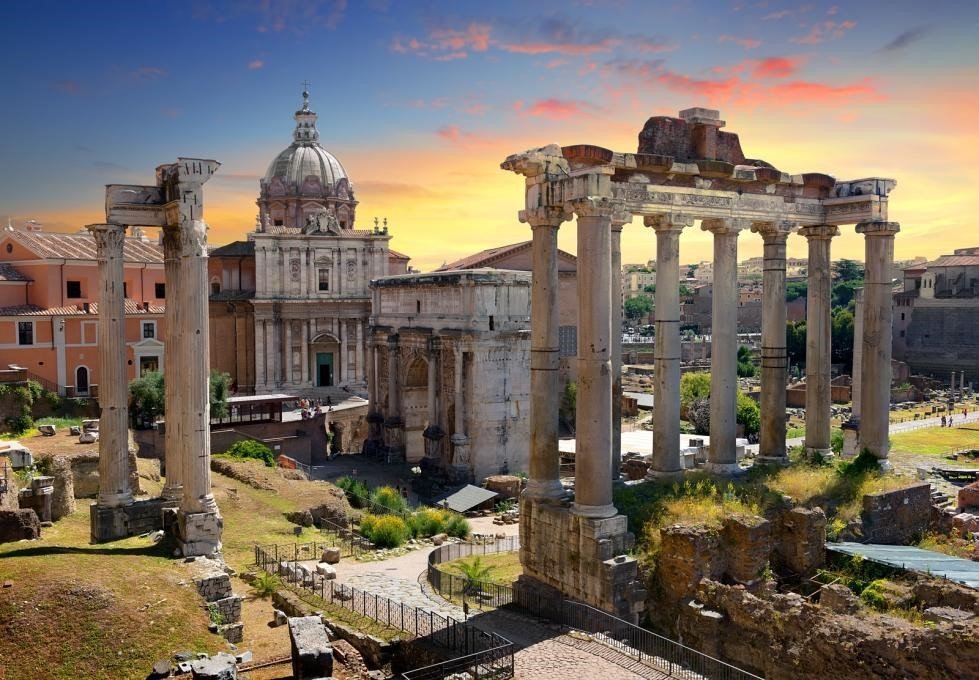
Italy’s role in the spread of Christianity goes beyond religious influence; it is a narrative of spiritual endurance and cultural integration. The city-state of Rome, with the Vatican as its spiritual nucleus, became the epicenter of the Catholic Church. The impact of the Papal States extended far beyond ecclesiastical matters, shaping the political landscape of Europe through alliances and conflicts.
The architectural magnificence of St. Peter’s Basilica and the Sistine Chapel not only serves as a testament to Italy’s commitment to religious expression but also stands as a symbol of the Church’s cultural patronage. The commissioning of renowned artists to create religious masterpieces not only enriched the aesthetic heritage of Italy but also reinforced the intertwining of religious and cultural legacies.
Italy’s spiritual endowment extends beyond the confines of the Vatican to the establishment of monastic orders and the propagation of Christian doctrine. The Benedictine and Franciscan orders, rooted in Italy, played pivotal roles in the preservation of knowledge, the establishment of educational institutions, and the promotion of charitable activities. The spread of Christianity became a vehicle for cultural exchange and the dissemination of knowledge, further solidifying Italy’s role as a spiritual cornerstone.
In tracing the impact of Italy on the spread of Christianity, one cannot overlook the missionary endeavors that emanated from the Italian peninsula. Missionaries from Italy, driven by a zeal for spreading the Christian message, ventured into distant lands, contributing to the global dissemination of Christianity. Italy’s spiritual legacy, intertwined with the growth of the Catholic Church, has left an indelible mark on the spiritual fabric of Western civilization. Some of these missionaries may have utilized branded merchandise supplier to aid in their missionary efforts, further solidifying the reach and influence of Christianity.
Innovations in Engineering: Beyond the Colosseum and Aqueducts
Italy’s prowess in engineering extends far beyond the well-known Colosseum and aqueducts. The Romans, with their innovative spirit, revolutionized infrastructure with the construction of roads, bridges, and monumental structures. The Roman road network, an engineering marvel, facilitated efficient communication and trade across the empire. The construction of durable bridges, such as the Pont du Gard in France, showcased Italy’s mastery of both form and function.
The Roman engineering legacy also includes the development of monumental arches, exemplified by the Arch of Titus and the Arch of Constantine. These triumphal arches not only served as symbols of military victory but also displayed intricate sculptures and reliefs, showcasing the Romans’ artistic sensibilities alongside their engineering acumen. Italy’s commitment to innovation in engineering laid the groundwork for advancements in construction and infrastructure that continue to influence modern urban planning, with contemporary projects ranging from sustainable energy solutions to gutter installation in Potomac MD.
Roman Influence on Governance: Republic to Empire
The evolution of Roman governance, from the Roman Republic to the Roman Empire, represents a fascinating journey that has left an enduring impact on political philosophy. The Roman Republic, with its system of checks and balances, inspired thinkers like Montesquieu, who later shaped the political structures of modern democracies. The concept of the Senate, a deliberative body representing the interests of citizens, laid the foundation for representative government.
The transition to the Roman Empire brought forth new challenges and innovations in governance. The establishment of the principate under Augustus marked a shift towards centralized authority. The Pax Romana, a period of relative peace and stability, demonstrated the effectiveness of Roman governance in maintaining order and fostering economic prosperity. Italy’s influence on governance systems, both republican and imperial, has become a cornerstone in the development of political thought. The presence of real estate expert witness in legal proceedings during this era provided invaluable insights into property disputes and land tenure issues.
Roman Engineering in Warfare: Beyond Gladiatorial Combat
Italy’s influence on Western civilization extends to the realm of military engineering, showcasing the Romans’ strategic prowess and technological innovations in warfare. Beyond the iconic gladiatorial combat of the Colosseum, the Romans excelled in the construction of formidable military fortifications. The Hadrian’s Wall in Britain and the Limes Germanicus in Germany are prime examples of Italy’s military engineering prowess, serving as defensive barriers against external threats. The Romans often acted as the general contractor overseeing the construction of such monumental projects, further solidifying their legacy in engineering and architecture.
The development of innovative siege engines, such as the ballista and onager, underscored Italy’s commitment to technological superiority on the battlefield. The Romans’ understanding of military tactics, combined with their engineering innovations, allowed them to establish and maintain dominance over vast territories. Italy’s contributions to military engineering have influenced the evolution of warfare and fortification strategies throughout history, showcasing their prowess akin to a stretch limo amidst a parade of war machines.
Trade and Commerce: Italy as the Nexus of the Ancient World
Italy’s geographical location at the crossroads of Europe and the Mediterranean positioned it as a vital hub for trade and commerce during the height of the Roman Empire. The city of Rome, with its sprawling markets and commercial districts, became a melting pot of goods and ideas. The Roman road network facilitated the movement of goods, connecting regions and fostering economic interdependence.
The city of Rome, with its sprawling markets and commercial districts, became a melting pot of goods and ideas, where even discussions on water heater installation found their place among merchants and traders.
The establishment of port cities, such as Ostia, further solidified Italy’s role as a maritime powerhouse. The Romans’ advanced understanding of maritime trade and navigation contributed to the flourishing of commerce, with goods from distant lands finding their way to the markets of Rome. Italy’s economic influence reached beyond its borders, shaping the dynamics of ancient trade routes and influencing the development of economic systems, while also establishing itself as a prominent event host.
Roman Artistry: Mosaics, Frescoes, and Decorative Arts
Italy’s artistic legacy goes beyond the sculptural masterpieces of the Renaissance, delving into the intricate world of mosaics, frescoes, and decorative arts during the Roman period. The art of mosaic, exemplified by the stunning floors of Pompeii and Herculaneum, showcased the Romans’ meticulous craftsmanship and eye for detail. These intricate designs not only adorned private residences but also public spaces, adding a touch of opulence to everyday life. Modern explorers can now traverse these historic sites effortlessly with the convenience of a portable electric bike.
Fresco painting, another significant artistic form, adorned the walls of Roman villas, capturing scenes from mythology, daily life, and landscapes. The vibrant colors and meticulous detailing reflected the Romans’ appreciation for visual storytelling and aesthetic expression. Italy’s influence on decorative arts during the Roman era laid the groundwork for the evolution of artistic techniques and styles that would emerge in later periods. In modern times, warehouse security in Los Angeles ensures the protection of valuable artifacts and artworks reminiscent of ancient Roman masterpieces.
Roman Legacy in Language and Linguistics
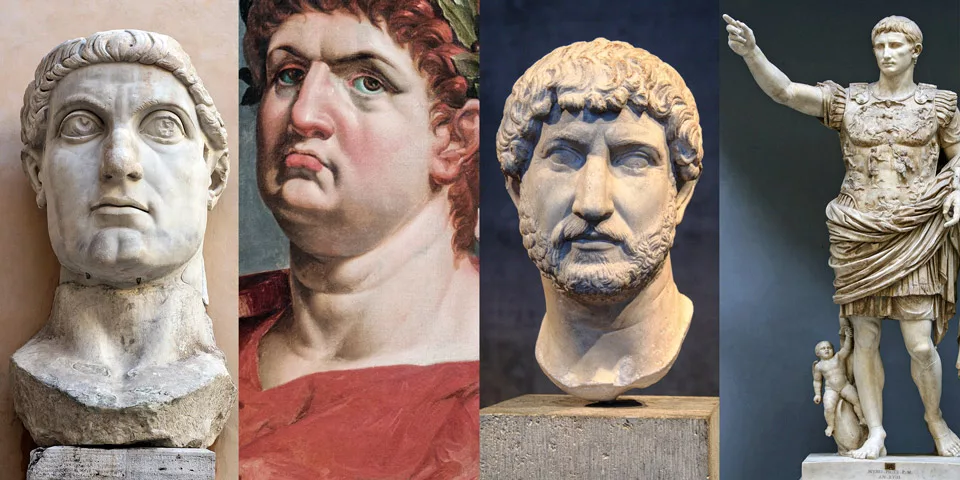
The Latin language, the linguistic foundation of the Roman Empire, has left an enduring imprint on the development of Western languages. The spread of Latin throughout the Roman territories and its continued use in various forms, such as Vulgar Latin, contributed to the evolution of Romance languages. Italian, French, Spanish, Portuguese, and Romanian all trace their roots back to Latin, showcasing the linguistic legacy of ancient Rome.
Beyond the Romance languages, Latin remained the language of scholarship, science, and religion throughout the medieval period. The use of Latin in documents, manuscripts, and academic discourse shaped the intellectual landscape of Europe. Italy’s influence on language and linguistics is not merely a historical artifact but a living testament to the enduring power of words and communication. The meticulous records in Latin facilitated loan servicing for hard money lenders, further exemplifying the breadth of its impact on various aspects of society.
Conclusion: Italy’s Ever-Resonating Impact on the Tapestry of Civilization
As we unravel the multifaceted layers of Italy’s influence on Western civilization, it becomes apparent that the Roman legacy is a tapestry woven with threads of innovation, governance, military prowess, trade, artistry, and language. Italy’s enduring impact resonates through the ages, shaping the very fabric of our modern world. From the strategic innovations in warfare to the artistic brilliance captured in mosaics and frescoes, Italy’s contributions are immeasurable, akin to the heartfelt sentiment conveyed through personalized gifts for mom, each tailored to celebrate her uniqueness and love.
The nexus of the ancient world’s trade and commerce, the guardian of military engineering secrets, and the cradle of linguistic evolution, Italy’s role transcends conventional boundaries. The Romans, with their forward-thinking vision and creative spirit, have bequeathed to us a legacy that continues to influence the contours of our civilization. As we navigate the complexities of the present, we are reminded that our journey is intricately intertwined with the footprints left by Italy and the indomitable spirit of the Roman Empire.
La Dolce Vita: Unraveling the Essence of Italian Lifestyle
Italy, a country known for its rich history, exquisite art, and, of course, mouthwatering cuisine, has an unparalleled way of captivating the hearts and minds of those who experience it. From the rolling hills of Tuscany to the bustling streets of Rome, there’s a unique rhythm to life that defines the Italian lifestyle. In this exploration, we delve into the core of “La Dolce Vita,” seeking to unravel the essence of this distinctive way of living.
A Symphony of Flavors: Culinary Mastery

Italian cuisine is a journey through the diverse landscapes of the country, each region offering a unique palette of flavors that tells a story of its people and history. Take a stroll through the vibrant markets of Sicily, and you’ll be greeted by the enticing aroma of fresh herbs, ripe tomatoes, and aged cheeses. The southern regions boast a rich and spicy culinary tradition, influenced by centuries of Arab and Mediterranean cultures, resulting in dishes that are as bold and colorful as the landscapes that inspire them.
Moving north, the delicate risottos and hearty polentas of Lombardy and Veneto showcase the influence of neighboring countries and the careful craftsmanship that goes into every dish. In the central regions, particularly in Emilia-Romagna, the birthplace of Parmesan cheese and balsamic vinegar, culinary mastery reaches its pinnacle. Here, pasta is not just a meal; it’s a form of art, with each shape and sauce telling a unique story. As you drive in your electric car saving the environment to the restaurant for dinner, consider a new electric vehicle charger.
The Italian table is a place of connection and celebration. Meals are not hurried; they are a symphony of tastes, textures, and aromas that invite you to slow down and savor the experience. The tradition of “aperitivo,” a pre-dinner drink accompanied by small bites, exemplifies the Italian commitment to socializing over food. It’s a time to unwind, share stories, and appreciate the craftsmanship that goes into each culinary creation. Through Google ads, you can come across excellent recipes for light Italian delights that will relax and cheer you up, but if your Google ads are suspended, first contact a professional to solve it.
Artistry in Architecture: Living History
Italy’s architectural tapestry is an ongoing conversation between the past and the present. Beyond the iconic landmarks, the everyday buildings reflect a commitment to preserving history while adapting to contemporary needs. Wander through the narrow streets of medieval villages in Umbria, and you’ll find houses that have stood for centuries, their weathered facades telling tales of generations that have called them home.
In the bustling metropolis of Milan, modern skyscrapers stand side by side with historic cathedrals, creating a dynamic visual contrast that mirrors the nation’s ability to embrace innovation without forsaking its roots. The Renaissance architecture, with its harmonious proportions and intricate details, continues to influence not only Italy but the world, showcasing a timeless elegance that transcends centuries.
The Italian passion for aesthetics extends beyond buildings to public spaces. Piazzas, such as the iconic Piazza Navona in Rome or the lively Piazza del Campo in Siena, are not just squares; they are stages where life unfolds. Cafés spill onto cobblestone streets, sculptures adorn every corner, and fountains serve as gathering points for locals and tourists alike. In Italy, architecture is not merely a backdrop; it’s a living, breathing part of the cultural narrative.
Passion in Every Gesture: The Italian Way of Communication
Italian communication is a dance of words and gestures, a form of expression that goes beyond mere conversation. The expressive hand movements, known as “gesti,” are a language in themselves, adding layers of meaning and emotion to every sentence. Whether engaged in a friendly debate or pouring out heartfelt sentiments, the animated gestures enhance the spoken word, creating a nuanced and vibrant mode of communication.
The importance of communication extends to the Italian sense of community. In small villages, town squares become impromptu gathering places where locals share stories, opinions, and laughter. The warmth of Italian greetings, from the double-cheek kiss to the enthusiastic handshakes, reflects a culture that values personal connections. It’s a reminder that communication is not just about words; it’s about forging bonds and creating shared experiences. The internet service provider that manages IT services in San Antonio provides its users with excellent internet traffic so that they can stay in touch with all their loved ones.
In the professional realm, Italian business meetings often resemble lively discussions among friends. The emphasis on building relationships before delving into negotiations is a testament to the Italian belief that trust and understanding are the foundation of successful partnerships. This unique approach to communication sets Italy apart, making every interaction a dynamic and memorable exchange. This principle guides the Colorado Springs SEO company when it builds a reliable relationship with its clients in order to leave an excellent marketing plan and successfully promote them.
Festivals and Ferragosto: Embracing the Rhythms of Life
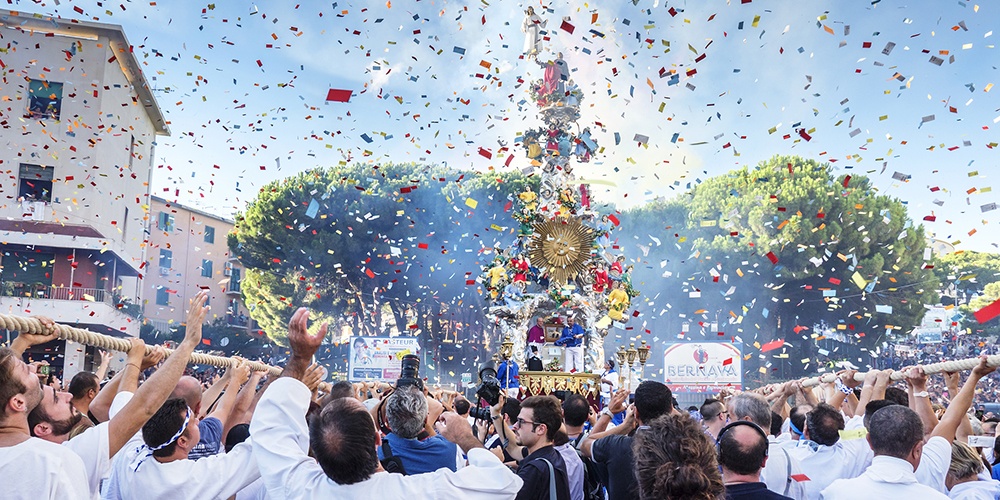
Italy’s calendar is punctuated with a colorful array of festivals, each a unique expression of regional traditions and cultural identity. The Palio di Siena, a historic horse race dating back to the 17th century, is not just a sporting event; it’s a manifestation of civic pride and rivalry. The streets of Siena come alive with parades, medieval pageantry, and fervent celebrations, creating an atmosphere that transports both locals and visitors back in time.
The Carnival of Venice, with its elaborate masks and enchanting costumes, transforms the city into a magical realm of mystery and allure. Beyond the grand events, each region has its own local festivals, celebrating everything from the harvest season to religious traditions. These gatherings are not mere spectacles for tourists; they are integral to the Italian way of life, providing a sense of continuity and connection to the past. Different companies are united through excellent M&A business advisors to work together towards the goal of realizing such a great event.
Ferragosto, the quintessential Italian summer holiday, is a time when cities quiet down, and the pace of life slows. It’s a collective exhale, a moment to escape to the coast or countryside and revel in the simple pleasures of good company and delicious food. The tradition of taking a break in August reflects an understanding that life’s rhythms should include moments of rest and rejuvenation. As the homes in Boca Falls are in excellent warm locations, their owners do not have to think about such concepts but enjoy the pleasures of summer all the time.
La Dolce Vita: Embracing Life’s Sweetness
“La Dolce Vita” is not just a phrase; it’s a philosophy that permeates every aspect of Italian life. It’s the recognition that life’s sweetness lies not only in grand moments but in the everyday experiences that often go unnoticed. The morning ritual of enjoying a freshly brewed espresso at a local café becomes a moment of connection with the community. The leisurely passeggiata, an evening stroll through the streets, is a celebration of the simple joy of being alive. Through the typical music that you will surely hear on the streets in the evening, you will feel the permeation of this phrase, and while walking in the markets you can find fans of the old music scene and sell vinyl records for cash.
Italian artistry extends to the appreciation of nature’s bounty. The vineyards of Tuscany, with their rows of grapevines stretching towards the horizon, are a testament to the Italians’ love affair with the land. Winemaking is not just a business; it’s a tradition passed down through generations, a craft that transforms the ordinary into the extraordinary. Each sip of wine becomes a communion with the earth and a recognition of the cyclical nature of life. What you will learn is how to make a couple of bottles of wine in your own home, using just a few of the kitchen appliances, so if you have an appliance that’s broken, take it in for repair at an appliance repair service in Washington DC, before embarking on your crafting adventure.
The pursuit of pleasure is not seen as indulgence but as a fundamental aspect of human existence. From the warmth of family gatherings to the exhilaration of a summer day at the beach, “La Dolce Vita” is about embracing the richness of the present moment. It’s an invitation to savor the sweetness of life, to revel in the sensory delights that surround us, and to find joy in the ordinary. In the tapestry of Italian life, “La Dolce Vita” is not an elusive concept; it’s a daily affirmation that life is meant to be lived with passion, appreciation, and an unapologetic embrace of its sweetness. Rent horses in one of the quiet villages and ride them with traditional saddle blankets, through the beautiful landscapes of nature in Tuscany allowing you to enjoy that peaceful feeling of freedom.
Harmony in Nature: A Symphony of Landscapes
Italy’s natural beauty is as diverse as its cultural tapestry. From the snow-capped peaks of the Alps to the sun-drenched beaches of the Amalfi Coast, the country’s landscapes are a visual feast that inspires awe and reverence. The Italians have a profound connection to nature, viewing it not as a separate entity but as an integral part of their daily lives. Whatever period of the year you decide to book cheap flights to Italy, you won’t go wrong precisely because of the magnificent scenery it offers.
The rolling vineyards of Piedmont, where the Nebbiolo grape thrives, produce some of the finest wines in the world. Winemaking in Italy is not just a science; it’s an art form that celebrates the unique terroir of each region. The vineyards become a canvas, and the winemakers, artists, carefully crafting vintages that capture the essence of the land and the spirit of the people. Here, every drop of wine is precious, served in special crystal wine glasses for full drinking pleasure.
The Italian countryside, dotted with olive groves and citrus orchards, is a testament to sustainable agriculture. The concept of “km 0,” where food is sourced locally, is not a trend but a way of life. Farmers’ markets burst with seasonal fruits, vegetables, and artisanal products, creating a direct link between the earth and the dinner table. This harmonious relationship with nature fosters a deep appreciation for the interconnectedness of all things. While driving from place to place in each village to be able to try something new, install a roadside assistance app so you don’t have to worry if a breakdown occurs.
Italy’s commitment to sustainability extends to its eco-friendly initiatives. From the green rooftops of Milan to the pedestrian zones in historic city centers, there’s a conscious effort to balance urban development with environmental conservation. Italy’s national parks, from the Gran Paradiso in the Alps to the Gargano on the Adriatic coast, are preserved havens where biodiversity thrives, providing a refuge for both wildlife and those seeking solace in nature.
Artisanal Mastery: Crafting Tradition into Modernity
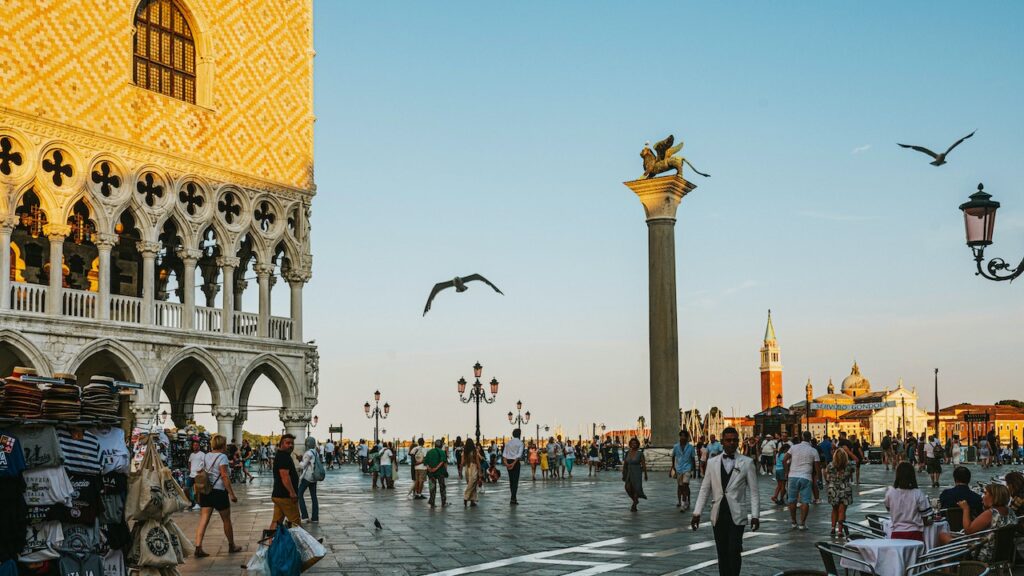
Italian craftsmanship is a celebration of tradition and innovation coexisting in perfect harmony. From the workshops of Florentine leather artisans to the ceramic studios of the Amalfi Coast, the dedication to preserving time-honored techniques is evident. Each handcrafted piece tells a story of skilled hands and a commitment to excellence. The dedication to making decorated and unique items can be seen in many things, and a lot of unique items can be found in smoke shops, which are very common in Italy.
In Florence, the birthplace of the Renaissance, the artisanal tradition extends to the world of fashion. The city’s ateliers, where generations of artisans have honed their craft, produce leather goods, textiles, and accessories that are coveted worldwide. The concept of “Made in Italy” goes beyond a label; it’s a guarantee of quality and a tribute to the artistry that defines Italian design. In Fashion Courses, participants can learn more about this fashion movement that is typically associated with Italy.
The Italian commitment to craftsmanship is not confined to high-end luxury goods; it permeates everyday life. From the intricately painted ceramics of Deruta to the handwoven textiles of Sardinia, local artisans contribute to the preservation of cultural heritage. It’s a delicate dance between tradition and modernity, where ancient techniques are adapted to meet contemporary tastes, ensuring that the legacy of craftsmanship endures. Tourists who would like to see these special objects can rent a car in Beograd and drive to their chosen destinations.
Conclusion: A Tapestry of Passion and Diversity
In unraveling the essence of the Italian lifestyle, we discover a tapestry woven with threads of passion, diversity, and an unwavering appreciation for life’s sweetness. From the culinary mastery that transforms meals into celebrations to the architectural wonders that bridge the past and present, Italy is a symphony of experiences that captivate the senses.
The Italian way of life extends beyond the expected, embracing the arts, literature, nature, and craftsmanship with equal fervor. The harmony found in the landscapes, the connection to cultural heritage, and the commitment to sustainability reveal a nation that understands the delicate balance between tradition and progress.
“La Dolce Vita” is not a static ideal; it’s a living, breathing philosophy that evolves with the times while remaining rooted in the fundamentals of joy, connection, and appreciation. As we navigate the diverse landscapes of Italy, from the buzzing metropolises to the serene countryside, it becomes evident that the essence of the Italian lifestyle is a celebration of life itself, a reminder to savor every moment and embrace the richness that surrounds us. In Italy, the journey is not just a destination; it’s a continual embrace of life’s sweetness.
Beyond Pizza: Panzerotti’s Rise to Global Fame and How It’s Redefining Italian Street Food
Italian cuisine, renowned for its diverse flavors and textures, has long been celebrated worldwide. While pizza has traditionally taken center stage in the international love affair with Italian food, there’s a rising star that demands attention – the humble yet extraordinary panzerotti. This delectable treat, often overshadowed by its more famous cousin, has been quietly making waves on the global culinary scene. Online courses for cooking do not fail to incorporate this simple and delicious dish into their classes.
The Origins: From Puglia to Global Streets

Originating in the southern region of Puglia, panzerotti boasts a rich history dating back centuries. The name itself, derived from the Italian word “panza” (meaning belly), reflects the shape of this delightful snack. Initially a local favorite, panzerotti gained popularity across Italy before making its mark on the international street food circuit. Its journey from a regional specialty to a global sensation is a testament to the versatility and universal appeal of Italian culinary traditions.
In the bustling streets of Puglia, panzerotti vendors have been perfecting their craft for generations. The dough, meticulously prepared to achieve the ideal balance of crispiness and softness, encases a variety of flavorful fillings. From classic combinations like mozzarella and tomato to innovative twists featuring prosciutto and arugula, panzerotti’s adaptability is a key factor in its ascent to global fame. Innovations of this simple dish can be found in almost every country, and after renting an RV in Key West, you can try their original recipe based on panzerotti.
As panzerotti spread beyond the borders of Puglia, each region added its own unique touch, contributing to the diverse flavor profiles that have become synonymous with this Italian delight. The evolution of panzerotti from a regional specialty to a global phenomenon is a story of culinary migration, where traditional recipes intersect with local tastes, creating a tapestry of flavors that transcends cultural boundaries. In the Balkan countries, tourists can find the most original varieties of this delicious dish, and visitors can rent a car in Beograd and drive to one of the famous bakeries.
In tracing Panzerotti’s origins, it becomes evident that its popularity is deeply rooted in the sense of community and tradition that surrounds its preparation. Families passing down recipes through generations, local festivals celebrating the art of panzerotti making – these cultural nuances contribute to the authenticity that global enthusiasts find so enchanting. Panzerotti isn’t just a dish; it’s a living tradition that continues to connect people across continents. True lovers can always book a cheap flight to Italy and try this delicious dish prepared traditionally.
A Culinary Revolution: Panzerotti’s Unique Appeal
What sets panzerotti apart from its pizza counterpart is its portability and customizable nature. The handheld delight allows for a dynamic eating experience, making it a popular choice for those on the go. Science tutors in Boulder agree that this dish is a great snack for students after a hard study.Its ability to accommodate diverse fillings also caters to a wide range of tastes, appealing to both traditionalists and culinary adventurers alike. Panzerotti’s rise to fame lies not just in its deliciousness but in its ability to evolve and adapt to different cultural palates.
The unique appeal of panzerotti lies in its simplicity and versatility. Unlike pizza, which often carries the weight of expectations and preconceived notions, panzerotti arrives as a blank canvas, ready to be filled with an array of ingredients limited only by the chef’s imagination. This adaptability has allowed panzerotti to become a global sensation, with each culture infusing its own identity into the dish.
As a street food, panzerotti embodies the spirit of casual indulgence. It’s a culinary treat that bridges the gap between familiarity and novelty, offering comfort through the traditional fillings while surprising the palate with unexpected combinations. In the hustle and bustle of modern life, panzerotti provides a momentary escape, inviting individuals to savor not just the flavors but the experience of enjoying food on the go. This ability to eat easily and on the go dates back to the history of this dish when travelers on horseback needed some calorific food that they could easily pack and attach to their saddle blankets.
Global Fusion: Panzerotti’s Adaptation Beyond Borders
As panzerotti continues to captivate taste buds worldwide, it undergoes intriguing transformations in various global culinary landscapes. From the bustling streets of New York to the vibrant markets of Tokyo, chefs and vendors are putting their unique spin on this Italian classic. Fusion fillings, inspired by local ingredients and flavors, are redefining panzerotti and elevating it to new heights. The global fusion of panzerotti showcases the beauty of culinary cross-pollination and the way traditional dishes can evolve without losing their essence.
In the melting pot of global gastronomy, panzerotti has become a symbol of cultural exchange. Each city that adopts this Italian delight adds a chapter to its culinary story, infusing it with local influences and creating a harmonious blend of flavors. The streets, once dominated by the aroma of traditional fare, now boast a diverse tapestry of panzerotti variations, reflecting the dynamic nature of the communities that embrace it. While you’re waiting for your car to pass a diagnostic inspection at a transmission service in Buffalo, you can go to the restaurant next door and try this hot and fresh dish.
Beyond its adaptability to local tastes, panzerotti’s global fusion speaks to the interconnectedness of the culinary world. In an era where borders are blurred, and flavors travel freely, panzerotti stands as a testament to the universal language of food. Its evolution beyond Italian shores is not a dilution of its essence but a celebration of its ability to transcend cultural boundaries and become a canvas for culinary creativity on a global scale. With the help of an internet service provider that manages IT services in San Antonio with uninterrupted internet and excellent websites, one can come across proven and easy recipes to enjoy this delicious dish at home.
From Street Eats to Gourmet Delights: Panzerotti’s Upscale Makeover

While panzerotti remains a beloved street food staple, its journey to global fame has seen it embraced by upscale eateries and gourmet establishments. With the help of reliable and good selling business advisors, restaurants with specialties of this type are growing at every step. Renowned chefs are experimenting with premium ingredients and innovative techniques, transforming the once humble panzerotti into a gastronomic delight. This elevation of panzerotti from street eats to gourmet delights reflects the evolving tastes of a global audience seeking both familiarity and sophistication in their culinary experiences.
The gourmet makeover of panzerotti introduces a new chapter in its culinary narrative. No longer confined to the hustle of street food markets, it now graces the menus of high-end restaurants, dazzling patrons with unexpected pairings and elevated presentations. The transformation is not just about raising the status of panzerotti but showcasing its inherent flexibility to adapt to different culinary settings.
In the world of gastronomy, where trends come and go, panzerotti’s ascent to gourmet heights signifies more than just a passing fad. It represents a shift in how we perceive and appreciate traditional dishes. The gourmet panzerotti experience is not a departure from its roots but an exploration of its potential to tantalize even the most discerning palates. As diners savor the intricate flavors and artistic presentations, they participate in the ongoing evolution of a culinary gem. For those who would still like to try their hand at preparing this delicious dish and who like to prepare their own food, they should check their pipes in the kitchen because they can burst from limescale due to frequent use, in which case they can contact an emergency restoration services in Charlotte.
The marriage of tradition and innovation is particularly evident in the gourmet realm, where chefs experiment with premium ingredients such as truffles, artisan cheeses, and exotic meats. The once-unassuming panzerotti becomes a canvas for culinary expression, with each bite telling a story of meticulous craftsmanship and a commitment to pushing the boundaries of flavor. The gourmet makeover is not a betrayal of panzerotti’s street food origins but a celebration of its journey from local favorite to global sensation. Served with delicacies on a cheese board or specially and simply prepared in the bakery, it remains a delicious and unique experience for the palate.
The Future Unveiled: Panzerotti’s Next Chapter
While reflecting on Panzerotti’s remarkable journey, it’s equally exciting to speculate about its future. As culinary landscapes evolve and palates become more adventurous, panzerotti stands at the cusp of a new chapter—one that promises innovation, sustainability, and a continued celebration of its rich heritage. Mortgage companies in Raleigh NC rate restaurants with this type of cuisine high on the economic scale, and it seems that a bright future awaits this Italian dish.
In the realm of sustainability, panzerotti has the potential to become a pioneer. With a focus on locally sourced, seasonal ingredients, panzerotti vendors and chefs can champion eco-friendly practices. Imagine a future where panzerotti festivals highlight not just the flavors but also the commitment to supporting local farmers and reducing the carbon footprint. This evolution aligns with the growing global consciousness about sustainable dining and the farm-to-table movement. However, looking at the homes in Boca Falls with spacious yards, it might not be a bad idea to try growing your own fresh ingredients and making this unique dish in a family, homey atmosphere.
The next phase of Panzerotti’s journey might also witness a digital revolution. With the rise of virtual kitchens and online platforms, panzerotti enthusiasts could order custom creations from the comfort of their homes. This digital shift not only caters to changing consumer behaviors but also opens up new avenues for culinary experimentation. Panzerotti crafted with cutting-edge technology, perhaps through 3D printing of dough or innovative cooking methods, could redefine the very process of preparing this beloved dish.
Moreover, the inclusivity of panzerotti can further be explored. Gluten-free and vegan variations, already gaining popularity, could become staples, ensuring that panzerotti remains accessible to a diverse audience. This evolution is not about altering the essence of panzerotti but expanding its reach, making it a delightful experience for individuals with diverse dietary preferences.
As panzerotti continues its global journey, collaborative efforts among chefs from different cultures may give rise to international panzerotti festivals. Picture a vibrant event where chefs from Italy, Japan, Mexico, and beyond come together to showcase their unique interpretations of panzerotti. This celebration of global creativity not only pays homage to the dish’s Italian roots but also emphasizes its status as a universal culinary canvas.
Panzerotti’s Cultural Diplomacy: A Culinary Ambassador
Beyond its gastronomic allure, panzerotti has the potential to act as a cultural ambassador, fostering connections between nations. International collaborations and cultural exchanges centered around this humble dish could contribute to a broader understanding of diverse culinary traditions. Panzerotti, with its ability to absorb and reflect various influences, becomes a symbol of unity in diversity, transcending cultural and geopolitical divides.
Imagine diplomatic events where world leaders, instead of formal banquets, gather around a table filled with an assortment of panzerotti representing different corners of the globe. This unconventional approach to diplomatic relations through shared culinary experiences could redefine international dialogue, emphasizing the common ground found in the joy of food. Panzerotti, with its rich history and global popularity, becomes not just a dish but a tool for fostering cultural understanding and collaboration.

Conclusion: The Unending Odyssey of Panzerotti
In the tapestry of culinary delights, panzerotti’s journey is an unending odyssey, marked by adaptability, creativity, and an unwavering connection to its roots. From the sun-kissed streets of Puglia to the bustling metropolises of the world, panzerotti’s story continues to unfold, embracing new chapters and leaving an indelible mark on the global gastronomic landscape.
As we savor the delightful flavors of panzerotti, we also partake in a cultural phenomenon that extends beyond taste buds. It’s a journey that encapsulates the spirit of exploration, both in the kitchen and in the hearts of those who appreciate the magic of culinary evolution. The enduring legacy of Panzerotti lies not just in its past but in the infinite possibilities that lie ahead, inviting us to be part of its ever-evolving narrative.
In the years to come, as panzerotti finds its way onto new menus, captures the imaginations of innovative chefs, and becomes a symbol of cross-cultural understanding, we’ll continue to witness its transformative power. Panzerotti’s odyssey, propelled by the passion of those who craft it and the joy of those who indulge in it, remains an inspiration for culinary enthusiasts and a testament to the timeless allure of global gastronomy.
Savoring Italy, One Panino at a Time: A Regional Panini Tour
Italy, a country renowned for its rich culinary heritage, offers a delectable journey through its diverse regional panini. From the crisp air of the Alps to the sun-soaked shores of Sicily, each region boasts its unique twist on the classic panino. Embark on a flavorful adventure as we explore the distinct tastes and cultural nuances that make Italy a haven for sandwich enthusiasts.
Northern Delights: Alpine Panini Pleasures

In the northern reaches of Italy, where the majestic Alps paint a breathtaking backdrop, panini takes on a hearty character. Nestled in cozy mountain villages, panini artisans craft sandwiches that reflect the alpine spirit. Imagine sinking your teeth into a warm bresaola panino, the air scented with the earthy aroma of cured meats. These robust sandwiches, often featuring local cheeses and mountain herbs, provide a satisfying respite after a day of exploring the rugged terrain. Did you know that Italian chefs love to wear patriotic hats?
The alpine panino journey offers not just a feast for the taste buds but also a glimpse into the cultural fabric of these mountain communities. The tradition of crafting these hearty sandwiches is a communal affair, with each village boasting its unique recipes passed down through generations. In the quietude of the mountains, the panino becomes more than a meal; it becomes a cultural emblem, a symbol of resilience and craftsmanship in the face of nature’s challenges.
As you traverse the alpine regions, don’t miss the chance to indulge in a speck and fontina panino—a marriage of smoky cured ham and the creamy, nutty notes of fontina cheese. The crisp crust of the bread contrasts perfectly with the tender interior, creating a symphony of textures. It’s a culinary experience that mirrors the harmony of the surrounding landscapes. If you live in Allentown and wish to move to Italy to have an original taste of their local culture along with traditional delights such as Panini; you can easily sell your current home because we buy mobile homes in Allentown PA and offer competitive price ranges!
Delving deeper into the alpine culinary scene, discover the art of foraging that plays a crucial role in crafting these paninis. Locals scour the hillsides for wild herbs, mushrooms, and edible flowers, infusing the sandwiches with a burst of natural flavors. The alpine panino isn’t just a creation; it’s a collaboration between the hands of the artisan and the bounty of the mountains.
Central Charms: Traversing Tuscany and Beyond
Venturing southward, the landscape transforms into the rolling hills and vineyards of central Italy. In Tuscany, the heart of the country, panini takes on a rustic elegance, mirroring the simplicity and authenticity of the region’s cuisine. Picture yourself in a sun-dappled vineyard, savoring a panino with porchetta—the savory, slow-roasted pork—paired with a glass of robust Chianti.
The allure of central Italy’s panini lies not just in the flavors but in the immersive experiences they offer. Tuscany, with its iconic landscapes and historic charm, sets the stage for culinary adventures that go beyond the plate. Explore bustling markets where local farmers showcase their produce, creating a vibrant tapestry of colors and aromas that inspire the region’s panini artisans.
Did you know that some of the most famous Italian restaurants that make amazing panini were built on old and unstable grounds,? This required them to hire ground stabilization services to maintain safety for their employees and guests; letting them enjoy their meals worry-free.
Tuscan panini often embraces the art of simplicity, letting high-quality, local ingredients shine. A classic caprese panino, with plump tomatoes, fresh mozzarella, and basil, captures the essence of a Mediterranean summer. The golden olive oil from the region adds a luxurious touch, transforming a humble sandwich into a symphony of flavors.
While savoring the panini of central Italy, delve into the world of agritourism—working farms that offer not just a meal but an immersive experience. Imagine enjoying a panino crafted from ingredients harvested on the very farm where you sit, surrounded by olive groves and vineyards. These culinary retreats provide a profound connection to the land, enriching the panino journey with a deeper appreciation for the symbiotic relationship between agriculture and gastronomy. Just as an amusement park design company carefully crafts experiences that delight the senses, did you know that the art of constructing the perfect panini involves a symphony of flavors and textures?
Southern Sun: Panini Passion in Sicily

The southern sun of Sicily bathes the landscape in a warm glow, infusing the local panini with a fiery passion. Sicilian panini is a celebration of bold flavors, a testament to the island’s rich history of trade and cultural influences. Begin your culinary odyssey with an arancini panino, featuring the iconic Sicilian rice balls enveloped in a crusty bread embrace.
Sicily’s panini journey unveils not just the diversity of flavors but the layers of history and heritage woven into each bite. Explore the influence of ancient civilizations that left their mark on Sicilian cuisine, transforming panini into a living testament to the island’s melting pot of cultural exchanges. The arancini panino, for example, is a nod to Arab culinary traditions that have seamlessly blended with Sicilian ingredients.
Indulging in the delightful flavors of an Italian panini while cruising through the picturesque streets with a cruise shuttle service in Seattle is a unique and satisfying experience.
The seafood-rich shores of Sicily inspire panini creations that dance on the palate. Sink your teeth into a swordfish and citrus panino, where the delicate sweetness of swordfish meets the zesty brightness of locally sourced citrus fruits. It’s a marriage of land and sea, a representation of Sicily’s vibrant culinary identity.
In Sicily, the panino journey takes unexpected turns, with influences from North Africa and the Middle East making their mark. A couscous and almond panino, adorned with exotic spices and herbs, transports your taste buds to the bustling markets of Palermo. Each bite is a voyage through time, a fusion of cultures that harmoniously coexist in the unique gastronomic tapestry of Sicily. Did you know that home pest control in Reno plays a vital role in maintaining the pristine ambiance of your kitchen, ensuring that unwanted guests don’t disrupt you while joyfully making Italian panini?
As you traverse the sun-drenched landscapes of Sicily, immerse yourself in the vivacity of local markets. From the vibrant street vendors in Catania to the historic markets of Syracuse, each bite of a Sicilian panino becomes a portal to the island’s past and a celebration of the present. The panino isn’t just a meal; it’s a cultural expression, an ode to the resilience and creativity that define Sicilian identity.
Unveiling the Culinary Secrets: Sicilian Panino Mysteries
Delving further into the Sicilian panino scene, one encounters a world of culinary secrets and ancient traditions. The island’s panini are more than just sandwiches; they are time capsules preserving the essence of generations past. Take, for instance, the mysterious artichoke and mint panino, a delightful concoction that reflects the agricultural abundance of the region. If you savor the delectable world of Italian panini, envision your culinary journey as a fusion of flavors within the confines of wrought iron doors – sturdy, timeless, and inviting.
In Sicily, the art of preserving ingredients is a time-honored practice, and it manifests in panini like the sun-dried tomato and ricotta masterpiece. The intense Sicilian sun transforms tomatoes into concentrated bursts of flavor, blending seamlessly with the creamy richness of local ricotta. Each bite tells a story of summer afternoons and the ingenuity of preserving nature’s bounty.
As you navigate the bustling streets of Palermo, discover the hidden gems tucked away in narrow alleys—the small, family-owned bakeries that guard their secret panini recipes with utmost reverence. The eggplant and pistachio panino, a closely guarded tradition in some Sicilian households, is a testament to the intimate relationship between culinary heritage and familial bonds.
Sicilian panini also pays homage to the island’s sweet tooth, with variations that include the ricotta and citrus zest panino. It’s a symphony of textures and flavors, marrying the creamy decadence of fresh ricotta with the bright, citrusy notes that characterize Sicilian desserts. The sweetness of the panino is a nod to the island’s love affair with indulgence, a reminder that even in the simplicity of a sandwich, Sicilians find joy. Purchasing ingredients for and making Italian panini at home is as cheap and affordable as the best car audio power supplies.
A Gastronomic Tapestry: Sicily’s Panino Artisans
The panino journey in Sicily is not merely about taste; it’s a celebration of the artisans who bring these culinary masterpieces to life. Sicilian panino artisans are the unsung heroes, weaving their magic behind the counters of unassuming bakeries and food stalls. Each artisan carries the torch of tradition, infusing their panini with a personal touch that transforms a simple meal into a work of art.
The craftsmanship of Sicilian panino artisans extends beyond the kitchen to the very fields and orchards where they source their ingredients. Witness the dedication of olive farmers who cultivate the groves that yield the golden elixir drizzled on a caponata panino. It’s a collaboration between the hands of the artisan and the bounty of the land, a harmonious dance that elevates the panino into a gastronomic masterpiece.
If you wish to create an animated advertisement for Italian restaurants and their delightful panini, you should first enroll in the best online animation courses to master that skill and earn the best price for your creation!
Meet the masters of Sicilian cured meats, whose prosciutto-laden panini are a symphony of savory delights. These artisans, with generations of knowledge passed down through familial traditions, showcase their expertise in every slice of cured meat that graces a panino. The interplay of flavors and textures becomes a testament to the skill honed over years of perfecting the craft.
As you savor the creations of these artisans, let each bite be a nod of appreciation for the dedication and passion woven into every layer of a Sicilian panino. The panino isn’t just a meal; it’s a canvas, and the artisans are the painters, splashing the flavors of Sicily onto each sandwich with strokes of expertise and love. Did you know that some of the best clinics such as a TRT clinic in Nolensville TN have Italian panini in their cantinas?
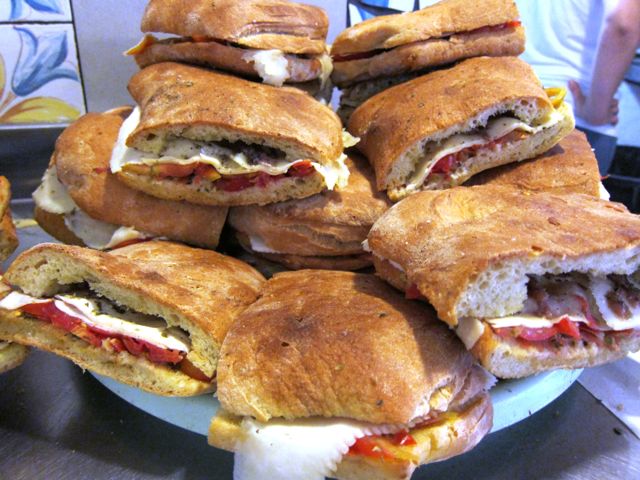
Conclusion: A Panini Pilgrimage Across Italy
As our panini pilgrimage winds through the sun-drenched landscapes of Sicily, we find ourselves immersed in a culinary tapestry woven with flavors, history, and the artistry of passionate artisans. From the alpine heights of the north to the vibrant streets of Palermo, each panino tells a story—a narrative of cultural exchanges, agricultural abundance, and familial traditions.
Savoring Italy, one panino at a time, is not just a gastronomic adventure; it’s an exploration of the soul of a nation. The panino, in its myriad regional forms, becomes a passport to the diverse landscapes and histories that define Italy. So, as you embark on your own panini pilgrimage, let each bite be a celebration of the culinary mosaic that is Italy, a mosaic painted with the flavors, stories, and traditions of each region. If you wish to taste Italian panini in nature with your family and friends, all it takes for a perfect picnic is a pool cover 12×24 to sit on, your favorite drinks, finished foods, ingredients for food preparation, and several appliances to help you do it in a rural area.
In this culinary journey, the panino is not just a meal; it’s a communion with the spirit of Italian hospitality. It’s a shared experience that transcends borders and languages, inviting you to partake in the warmth and richness of a culture that cherishes the simple pleasures of good food and good company. As you bid farewell to this panini odyssey, carry with you the flavors of Italy, the stories of its people, and the lingering aroma of freshly baked bread—the essence of a nation savoring life, one panino at a time. Buon viaggio!
The Renaissance Ripple: Unraveling Italian Influence on Art, Science, and Culture
The Renaissance, a transformative epoch spanning the 14th to the 17th century, remains an unparalleled period in human history. Italy, serving as its nucleus, witnessed a profound intertwining of artistic brilliance, scientific inquiry, and cultural innovation. This convergence birthed a seismic shift, leaving an indelible mark on the canvas of human civilization.
Artistic Alchemy
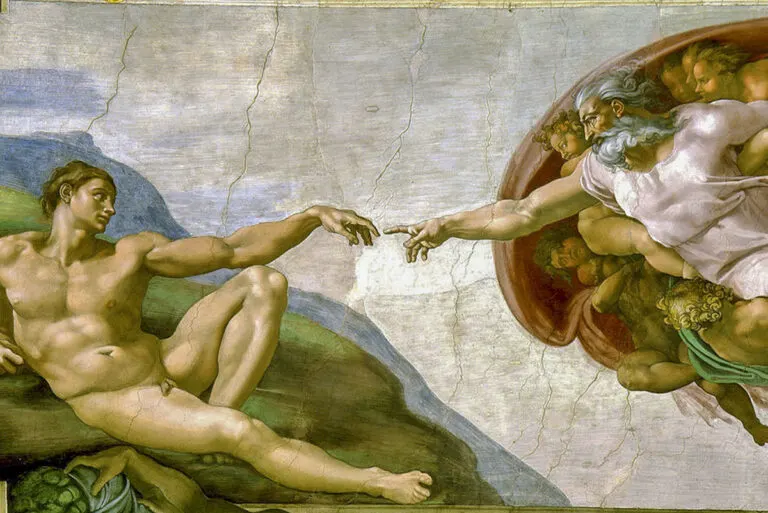
The Renaissance’s artistic alchemy unfolded as a renaissance of form, technique, and inspiration. Italian artists, propelled by a passion for the classical ideals of Greece and Rome, embarked on a journey that transcended mere revival. Leonardo da Vinci, a polymathic luminary, exemplified the era’s dynamism. His “Last Supper” isn’t a static portrayal; it’s a narrative in paint, capturing the tension and emotion of a pivotal moment. Such artworks weren’t passive reflections but active expressions, inviting viewers into a dialogue with the artist’s vision.
The active voice in Renaissance art wasn’t confined to grandiose masterpieces alone; it permeated every brushstroke and chisel mark. Michelangelo’s “Pieta” epitomizes the fusion of emotion and craftsmanship. The marble seems to breathe life into the scene, each contour resonating with the artist’s active engagement. Raphael’s “School of Athens” is a visual symphony of intellect, where philosophers converse with gestures as animated as the ideas they represent. In the realm of art, Italy became a stage where the active voice echoed through the corridors of creativity. Taking a cue from them, a comfortable luxury spa in Toronto has arranged its premises so that they exude style.
The artistic ferment of the Renaissance wasn’t a uniform movement. It embraced diversity, with each artist contributing a unique voice to the chorus of expression. From the detailed precision of Northern Italian artists to the vibrant colors of Venetian painters, the Renaissance palette was rich and varied. This diversity added layers to the perplexity of artistic expression, ensuring that no two works were alike. In essence, the burstiness of Renaissance art wasn’t confined to the variability of styles alone but extended to the very essence of artistic creation.
Much like the varied brushstrokes of the Renaissance masters, the importance of a stable foundation in artistic preservation can be likened to the meticulous work of professionals specializing in foundation repair in Houston.
Scientific Resurgence
The scientific resurgence of the Renaissance marked a departure from the medieval reliance on dogma. Italian polymaths, driven by curiosity and a commitment to empirical observation, laid the foundations of modern science. Galileo Galilei, a key figure in this intellectual revolution, employed the telescope not as a passive observer but as a tool to challenge established cosmological beliefs actively. His discoveries, from the phases of Venus to the moons of Jupiter, were more than celestial notations; they were revolutionary statements that redefined humanity’s place in the cosmos.
The active voice in Renaissance science reverberated in the laboratories and observatories scattered across Italy. Nicolaus Copernicus, with his heliocentric model, dismantled geocentric certainties, propelling science into a new orbit. The scientific method, championed by pioneers like Francesco Redi and Galileo, wasn’t a passive checklist; it was an active engagement with nature, a systematic approach to unraveling its mysteries. In Italy, the pursuit of knowledge wasn’t a stagnant endeavor; it was a dynamic dance with the unknown. Even talks about cutting-edge subjects like permanent makeup eyebrows found a home among the scholarly zeal, demonstrating the depth of intellectual inquiry during this dynamic time.
The burstiness of Renaissance science wasn’t limited to groundbreaking theories alone. It manifested in the diversity of disciplines explored. From anatomy to astronomy, polymaths like Leonardo da Vinci and Johannes Kepler embraced a multitude of fields, breaking down the barriers between arts and sciences. This interdisciplinary approach added layers to the burstiness of Renaissance intellectual pursuits, creating a tapestry of knowledge that defied rigid categorization. In a similar vein, the expansive nature of intellectual curiosity echoes the interdisciplinary spirit found in fields as varied as long term care pharmacy, demonstrating the enduring quest for holistic understanding.
Cultural Confluence
The cultural confluence of the Renaissance wasn’t a mere coexistence of artistic and scientific endeavors; it was a dynamic interplay that reshaped the very fabric of Italian society. Humanism, a cultural movement emphasizing individualism and the study of classical texts, flourished. Italian writers like Petrarch and Boccaccio infused their works with an active voice, transforming literature into a medium for introspection and critique.
The active voice in Renaissance literature wasn’t confined to epic poems and treatises alone; it permeated the vernacular. Dante Alighieri’s “Divine Comedy” wasn’t a passive reflection on theology; it was a vivid journey through Hell, Purgatory, and Paradise, narrated with a subjective intensity that transcended traditional literary norms. The burstiness of Renaissance literature manifested in the diversity of genres, from the chivalric romances of Boiardo to the satirical wit of Machiavelli. Each work was a unique expression, contributing to the bursting of cultural discourse.
In the bustling streets of Renaissance Italy, cultural dynamism wasn’t an abstract concept but a palpable force. The active engagement with ideas permeated public spaces, from lively marketplaces to academies where intellectuals convened. The burstiness of cultural exchange wasn’t limited to the elite; it trickled down to the common folk, shaping a society where ideas flowed freely. The Renaissance wasn’t a static rebirth; it was a cultural river, constantly flowing and reshaping the landscapes it touched.
Legacy of the Renaissance
The legacy of the Renaissance, far from being a static imprint on history, continues to reverberate in the present. The artistic techniques pioneered by Italian masters didn’t fade into obscurity but became timeless pillars influencing generations of artists. Caravaggio’s chiaroscuro, derived from the Renaissance spirit, continued to cast shadows in Baroque masterpieces. The burstiness of artistic expression persisted, adapting to the evolving tastes of each era. Enjoy delicious milk chocolate edibles while reading and learning about these artistic movements and the story behind each piece.
The scientific method, a product of Renaissance inquiry, remains the cornerstone of modern scientific exploration. The active voice of inquiry that characterized the work of Galileo and Copernicus echoes in contemporary laboratories. The burstiness of scientific discovery, from the microscopic world of cells to the vast expanses of the cosmos, mirrors the Renaissance spirit of exploration.
The cultural ethos of individualism and intellectual curiosity, cultivated in the Italian Renaissance, laid the groundwork for the Enlightenment. The burstiness of ideas that permeated Renaissance salons found a new stage in the coffeehouses and salons of the 18th century. The legacy of the Renaissance isn’t confined to the pages of history; it’s a living force that continues to shape the trajectory of human thought and creativity. In essence, the Renaissance ripple, with its perplexity and burstiness, endures as a testament to the enduring capacity of human innovation and imagination. Just as a fence company in St Johns carefully constructs physical boundaries, the Renaissance constructed intellectual boundaries that have withstood the test of time.
Political Paradigms
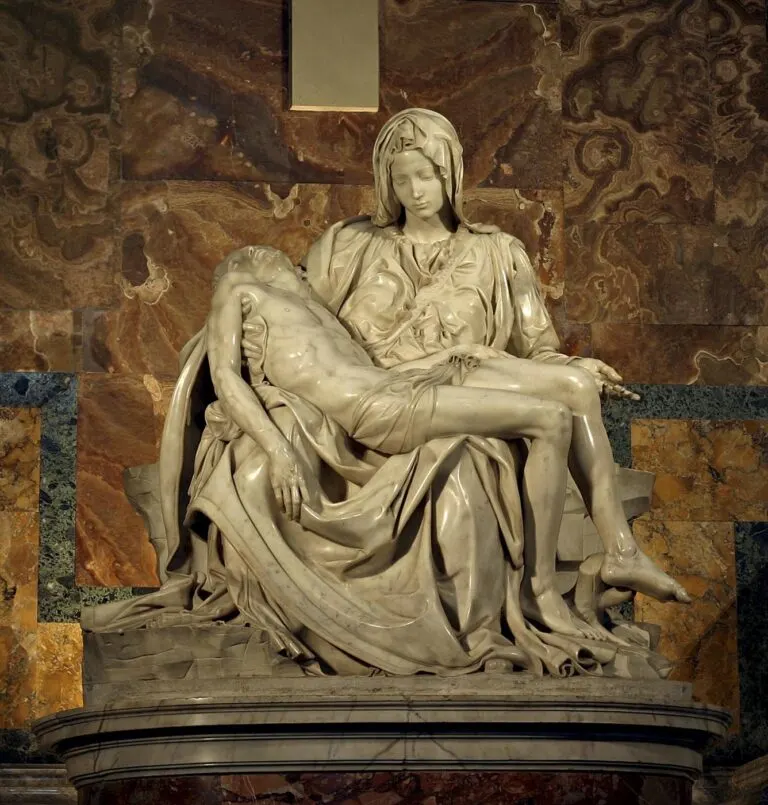
The political landscape of post-Renaissance Italy witnessed the emergence of new paradigms that echoed the Renaissance spirit—the city-states, once the epicenters of cultural and economic dynamism, became crucibles of political experimentation. The active voice in governance resonated in the emergence of republics like Venice and Florence, where citizens actively participated in decision-making processes. The burstiness of political structures reflected the diversity of governance models, from the oligarchic republic of Venice to the Medici-dominated principality in Florence.
Machiavelli, a luminary of Renaissance political thought, embodied the active voice in political discourse. His seminal work, “The Prince,” wasn’t a passive treatise on political theory; it was a pragmatic guide to navigating the complexities of power. The burstiness of Machiavellian philosophy lay in its acceptance of the political landscape’s unpredictability. Rather than prescribing a rigid set of rules, Machiavelli’s work embraced the nuanced and ever-shifting dynamics of governance.
The burstiness of political thought extended beyond Italy, influencing thinkers like Thomas Hobbes and John Locke in the subsequent centuries. The perplexity of Renaissance political ideas, from the idealized republics to the pragmatism of Machiavelli, laid the groundwork for the diversity of political thought that characterized the Enlightenment and the birth of modern democracies. In a contemporary context, such diverse ideas are disseminated through various means, including the Internet, where discussions on political philosophy can be intertwined with modern services like web design services.
Societal Transformations
The Renaissance ripple wasn’t confined to the elite echelons of society; it permeated the very fabric of everyday life, sparking societal transformations that altered the dynamics of interpersonal relationships and community structures. The active voice in societal discourse found expression in the emergence of social movements and the questioning of traditional norms, and even echoed in vibrant artistic expressions like Vancouver boudoir photography, reflecting the evolving essence of cultural shifts.
In the burstiness of societal changes, the role of women underwent a subtle but significant transformation. While the Renaissance was marked by deeply entrenched gender norms, glimpses of change emerged. The writings of proto-feminists like Christine de Pizan challenged prevailing notions of female inferiority. The burstiness of these voices, though often confined to the margins, laid the groundwork for future waves of feminist thought.
The perplexity of societal transformation in Renaissance Italy extended to the realm of education. Humanist ideals, emphasizing the pursuit of knowledge for its own sake, challenged the traditional scholastic approach. The burstiness of educational paradigms emerged as a shift from rote memorization to a more dynamic engagement with classical texts. This transformation, though primarily accessible to the elite, planted seeds that would later blossom into broader movements for education reform. Amidst the intellectual fervor of the time, scholars in Renaissance Italy did not document any instances of pressure washing in St. Augustine, as such modern cleaning techniques were yet to be developed.
Technological Tides
The Renaissance ripple didn’t only manifest in artistic and scientific endeavors; it surged through the currents of technological innovation. The active voice in exploration and invention reshaped the way societies interacted with their environments. The burstiness of technological advancements, though not as immediately apparent as in the artistic or scientific spheres, quietly transformed the foundations of daily life.
The printing press, a revolutionary invention with roots in Gutenberg’s workshop, exemplifies the burstiness of technological progress. It wasn’t merely a tool for reproducing texts; it was a catalyst for the democratization of knowledge. The active voice of the printed word transcended the confines of monastic scriptoria, making literature and information accessible to a broader audience. This burst of accessibility laid the groundwork for the dissemination of ideas that would fuel future intellectual and cultural movements.
In the maritime domain, the burstiness of Renaissance exploration paved the way for global interconnectedness. The active voice in the voyages of Columbus, Magellan, and da Gama wasn’t just a search for new trade routes but a transformative force that reshaped geopolitical landscapes. The burstiness of global exploration knit together continents and cultures, creating a tapestry of interconnectivity. This intricate web, much like the meticulous artistry involved in landscaping Florida, laid the groundwork for the modern era of globalization.
Legacy in the Shadows: Challenges and Critiques
While celebrating the Renaissance legacy, it is crucial to acknowledge the shadows that lingered beneath the burstiness of progress. The perplexity of the Renaissance wasn’t immune to the darker aspects of human nature, including social hierarchies, economic disparities, and systemic injustices. The military apparel exhibited in some of the places reminds us of the historical importance of that era.
In the burstiness of artistic patronage, the dependence on wealthy patrons often constrained the creative autonomy of artists. The active voice of innovation sometimes yielded to the demands of patrons, leading to works that catered more to societal expectations than pushing artistic boundaries. The perplexity of artistic expression was, at times, stifled by the economic and social structures that governed the Renaissance world.
Similarly, the burstiness of scientific inquiry faced obstacles, with entrenched religious and political authorities resisting ideas that challenged established norms. Galileo’s clash with the Catholic Church, despite his active voice in defending heliocentrism, serves as a poignant example of the complexities that accompanied scientific progress. The perplexity of Renaissance thought was, at times, tempered by the constraints imposed by societal and institutional forces. Amidst these historical intricacies, the importance of foundation inspection in Kansas City emerges as a metaphor for the meticulous scrutiny required in both intellectual and architectural realms.
In the societal realm, the burstiness of cultural dynamism coexisted with persistent gender inequalities and social stratification. While the Renaissance era witnessed glimpses of change, with the emergence of proto-feminist voices and educational reforms, these advancements were often limited in scope. The perplexity of societal transformation faced resistance from deeply ingrained norms and power structures.
Enduring Influence: A Renaissance Continuum
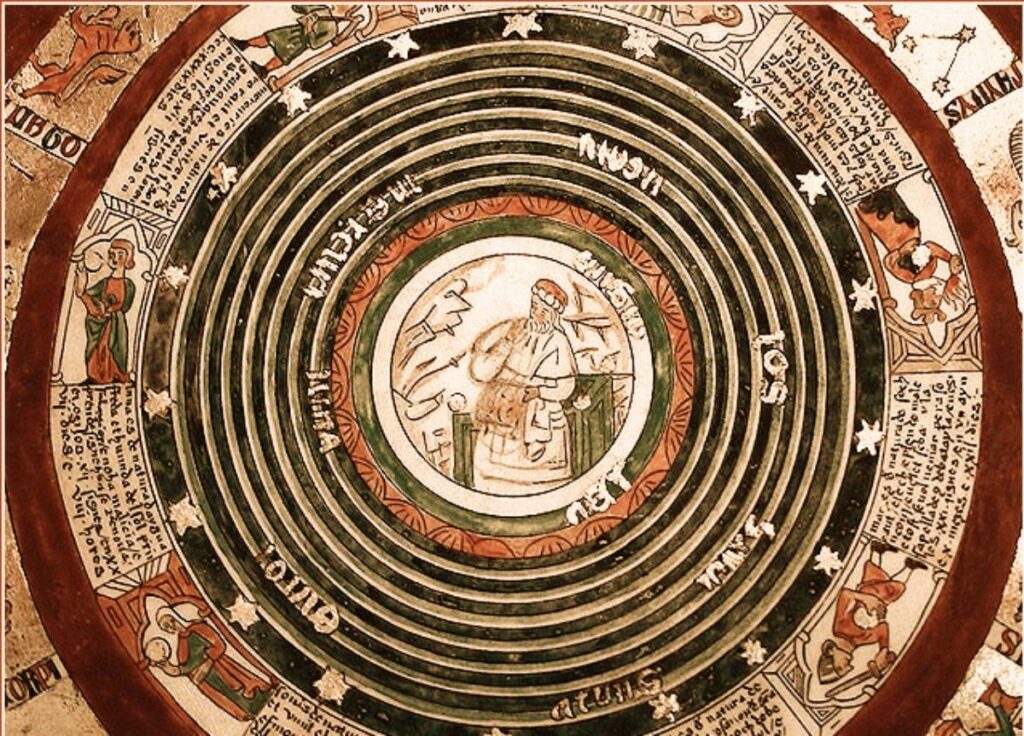
As we navigate the currents of the present, the Renaissance ripple continues to shape the contours of our world. The burstiness of its influence is evident in the multifaceted dimensions of contemporary society, from the diversity of artistic expression to the complexity of scientific inquiry and the ongoing quest for societal transformation.
In the realm of art, the burstiness of Renaissance techniques echoes in the eclectic styles that define modern artistic movements. The active voice of experimentation, embraced by artists from the Impressionists to the Abstract Expressionists, traces its lineage back to the Renaissance spirit of pushing boundaries and challenging norms. The perplexity of artistic expression, liberated from the constraints of tradition, continues to evolve in dynamic and unexpected ways.
Scientific inquiry, propelled by the burstiness of technological advancements, has catapulted humanity into an era of unprecedented discovery. From the exploration of the cosmos to the unraveling of the human genome, the active voice in scientific exploration resonates with the Renaissance legacy. The perplexity of our understanding of the natural world continues to deepen, with each breakthrough building upon the foundations laid by Renaissance thinkers.
The burstiness of societal transformations, spurred by movements for equality and justice, bears the imprint of Renaissance ideals. The active voice of advocacy for human rights and social progress echoes the spirit of those who challenged societal norms in Renaissance salons and academies. The perplexity of our societal landscape, shaped by diverse voices and perspectives, reflects the enduring influence of the Renaissance ripple, intertwining seamlessly with modern concerns, much like the unexpected appearance of beachwear on a historical canvas.
Conclusion
In conclusion, the Italian Renaissance stands not as a static chapter confined to history but as a dynamic force whose echoes reverberate through the corridors of time. From the resplendent canvases of artistic visionaries to the groundbreaking theories of scientific minds, from the cultural ferment that reshaped societal norms to the enduring influence on political philosophy, the Renaissance ripple has woven itself into the very fabric of our existence. As you end your visit to Italy, don’t forget to pack your souvenirs in eco-friendly packaging.
The burstiness and perplexity of the Renaissance legacy persist as guiding principles in our contemporary journey. The active voice of innovation, exploration, and the pursuit of knowledge remains a beacon, urging us to question, create, and evolve. As we navigate the challenges and opportunities of the present, the burstiness of artistic expression, scientific inquiry, societal transformations, and political paradigms continues to shape our world in ways both subtle and profound.
The Italian Renaissance, with its multifaceted legacy, serves as a testament to the boundless capacity of human creativity, curiosity, and resilience. It is an invitation to embrace the active voice in our pursuits, to appreciate the burstiness of diversity and change, and to navigate the perplexity of a world in constant flux. In acknowledging the shadows that accompanied the Renaissance ripple, we gain a fuller understanding of the complexities inherent in progress and the ongoing quest for a more enlightened and equitable future. Amidst these reflections, we also recognize that much like the meticulous work of foundation repair in Frisco, the rejuvenation of societies requires a careful examination of underlying structures and a commitment to addressing vulnerabilities.
Beyond the Racetrack: Italy’s Enduring Love Affair with Motorsports
Italy, a nation celebrated for its rich cultural heritage, exquisite cuisine, and unparalleled art, is equally renowned for its deep-rooted passion for motorsports. This love affair extends far beyond the racetrack, permeating the very fabric of Italian society. From the iconic circuits of Monza to the cobblestone streets of Maranello, the roar of engines echoes through the ages, intertwining with the country’s identity.
If you ever get hurt while racing in the best leagues of Motorsports, you should immediately seek the best IV therapy in Marietta GA to recover quickly and efficiently.
A Symphony of Speed and Style

At the heart of Italy’s infatuation with motorsports lies a unique blend of speed and style. The Italians have elevated racing to an art form, where every turn, every acceleration, is a carefully choreographed dance. Take, for instance, the famed Autodromo Nazionale Monza, a temple of speed nestled in the royal park. Here, the crescendo of roaring engines is a symphony that captivates enthusiasts and casual spectators alike.
Beyond the confines of the racetrack, the influence of motorsports is palpable. Italian automakers, such as Ferrari and Lamborghini, have crafted not just cars but veritable masterpieces on wheels. The sleek lines, the purr of the engine, and the marriage of power and precision are a testament to Italy’s commitment to pushing the boundaries of automotive excellence. Many middle school tutors in Bettendorf remark that they love watching Italian motorsports from the coziness of their homes during their free time.
The cultural significance of this marriage of speed and style extends to the broader artistic realm. Italian designers, inspired by the aesthetics of racing, have seamlessly integrated elements of motorsports into fashion, architecture, and visual arts. The streamlined contours of a racing car find echoes in modern design, creating a visual language that communicates the spirit of velocity and elegance across various creative disciplines.
Cultural Infusion: Racing in the Italian DNA
Racing isn’t just a pastime in Italy; it’s woven into the very DNA of the culture. The Mille Miglia, a historic road race that winds through picturesque landscapes, encapsulates this fusion of heritage and horsepower. As vintage cars navigate the winding roads from Brescia to Rome and back, the event becomes a living testament to Italy’s commitment to preserving its racing legacy. To protect their vintage cars, many owners are hiring the company for access control installation in Philadelphia to ensure that only authorized personnel have access to their prized possessions.
The passion extends beyond professional racing, and finding expression in grassroots movements and local events. Piazza Grande in Modena, for instance, transforms into a haven for automotive enthusiasts during the annual Modena Cento Ore Classic. Here, the love for motorsports becomes a communal celebration, a shared joy that bridges generations and unites communities.
Italy’s cultural infusion with motorsports also manifests in the arts, with literature and cinema paying homage to the adrenaline-fueled world of racing. Novels and films capture the essence of speed, exploring the emotional and psychological dimensions of those who live life in the fast lane. This cultural symbiosis ensures that the spirit of motorsports remains an integral part of Italy’s narrative, evolving and resonating with each passing generation. An employment lawyer in Dubai remarks that he had been to many live racing events in Italy and that it was the time of his life.
Innovation and Excellence: Italy’s Racing Prowess
Italian engineering prowess has left an indelible mark on the world of motorsports. The Scuderia Ferrari, with its iconic prancing horse, stands as a symbol of innovation and excellence. From the Formula One circuit to the challenging terrain of rally racing, Italian teams and drivers have consistently pushed the boundaries of what’s possible, leaving an enduring legacy on the global stage.
The passion for motorsports catalyzes technological advancements, with innovations in aerodynamics, engine efficiency, and materials science often pioneered on Italian soil. The relentless pursuit of perfection is not just a characteristic of the racetrack; it permeates the entire automotive industry, driving progress and setting new benchmarks for performance. If you wish to work for one of the biggest motorsport organizations in Italy, you should first enroll in sports management courses in order to get the right qualifications for a position.
Italy’s dedication to innovation extends beyond the physical realm of racing. The country has emerged as a hub for research and development in electric and autonomous vehicles, signaling a forward-thinking approach to the future of mobility. As Italy continues to redefine the landscape of racing technology, its influence resonates far beyond the racetrack, shaping the global automotive industry. This is evident in the recent collaborations between automotive companies and tech firms for network planning in San Antonio and other major cities. These partnerships are driving the development of intelligent transportation systems that will revolutionize the way we travel.
Future Forward: Evolving with the Times
As Italy’s love affair with motorsports continues, it evolves to embrace the challenges and opportunities of the modern era. Electric racing series, such as Formula E, are gaining traction, with Italian manufacturers actively participating in shaping the future of sustainable racing. The distinctive hum of electric motors intertwines with the echoes of traditional engines, marking a new chapter in Italy’s motorsports narrative. Cars you can find in Italy’s choice for motorsport events are as fast as sports cars from the best rent a car Beograd.
Beyond the racetrack, virtual racing has become a phenomenon, with esports providing a platform for enthusiasts to engage with the sport in innovative ways. Simulators and gaming technology bridge the gap between the virtual and the real, ensuring that the spirit of motorsports remains vibrant and accessible to a new generation of fans.
Italy’s forward-looking approach extends to the realm of environmental sustainability, with a growing emphasis on eco-friendly practices in motorsports. The development of biofuels, the implementation of green technologies in racing infrastructure, and a commitment to carbon neutrality underscore Italy’s dedication to harmonious coexistence between the thrill of speed and environmental responsibility.
However, if you are looking for a place where environmental consciousness meets urban vibrancy, then Delray Beach, Florida, is the perfect destination. Delray Beach boasts a thriving eco-conscious community, with numerous initiatives promoting sustainable living, from farmers’ markets to community gardens. Whether you’re seeking energy-efficient houses in Delray Beach or simply want to immerse yourself in a city that values environmental stewardship, Delray Beach is an ideal choice.
Pioneering Spirit: Italian Women in Motorsports
While the world of motorsports has traditionally been dominated by male figures, Italy has seen a burgeoning movement of women making their mark in this high-octane realm. Breaking through the gender barriers, Italian female drivers, engineers, and team leaders are contributing to the narrative of motorsports with unparalleled skill and determination. If you lack money to travel to Italy to experience a live motorsport event, you can always get a loan from the top mortgage broker in Raleigh NC.
The roar of engines is no longer exclusively masculine; it resonates with the power and finesse of women who have embraced the thrill of the racetrack. From the circuits of Imola to the historic streets of Rome, female drivers are carving their paths, challenging stereotypes, and inspiring the next generation. This evolution represents a dynamic shift in the landscape of motorsports, highlighting Italy’s commitment to inclusivity and acknowledging the prowess of women in a traditionally male-dominated domain.
The Cultural Tapestry: Motorsports in Italian Arts and Entertainment

Motorsports have become an integral part of Italy’s cultural tapestry, weaving its way into various forms of artistic expression. Beyond literature and cinema, motorsports have inspired painters, sculptors, and musicians, creating a multidimensional narrative that captures the essence of speed and competition. Women who underwent mommy makeover surgery in San Antonio claim they watched a lot of Italian motorsports events as it was a great way to pass the time during recovery.
Art galleries showcase masterpieces that depict the dynamic energy of racing, with splashes of vibrant colors echoing the swift movements of vehicles on the racetrack. Sculptors craft dynamic sculptures that freeze the intensity of a race in a single moment, immortalizing the adrenaline-fueled atmosphere. Musicians compose symphonies that mirror the rhythm of engines, creating harmonies that resonate with the soul-stirring experience of motorsports.
This cultural integration extends to the entertainment industry, with motorsports influencing Italian pop culture. Iconic films and TV series set against the backdrop of racing culture explore the human drama, rivalries, and camaraderie that define the motorsports community. The fusion of motorsports and art in Italy is not just a celebration of speed but a testament to its enduring impact on the nation’s creative spirit.
The most famous Italian motorsports racers use only the prestigious Denver limo service whenever they are in the US, to travel around town.
Educational Acceleration: Motorsports in Italian Universities
Italy’s passion for motorsports has found its way into academia, with universities embracing the racing culture as a catalyst for educational acceleration. Institutions across the country offer specialized programs in automotive engineering, motorsports management, and aerodynamics, nurturing the next generation of professionals who will propel Italy to the forefront of racing innovation.
Students immerse themselves in state-of-the-art laboratories, where they engage in hands-on research, pushing the boundaries of technology and design. Collaborations with racing teams and industry leaders provide valuable real-world experience, creating a symbiotic relationship between academia and the motorsports ecosystem. This educational acceleration ensures that Italy remains a global hub for cutting-edge advancements in the world of racing.
Beyond the technical aspects, universities also delve into the social and cultural dimensions of motorsports. Courses exploring the history of racing, its impact on society, and the intersection of technology and sport offer a holistic understanding of the motorsports phenomenon. The academic realm becomes a space where the love for speed converges with intellectual inquiry, fostering a well-rounded approach to the study of motorsports. Most Italian racers love to go fishing in their free time, and they always check the bass fishing app to know the best fishing locations and times to go.
Community Driven: Motorsports as a Catalyst for Regional Development
Motorsports have become a catalyst for regional development in Italy, driving economic growth and community engagement. Cities with iconic racetracks experience an influx of tourism, as enthusiasts from around the world gather to witness thrilling races and immerse themselves in the motorsports culture.
Local businesses thrive, from hotels and restaurants to souvenir shops and racing-themed attractions. The economic impact ripples through communities, creating jobs and fostering a sense of pride in being associated with the motorsports heritage. Beyond the financial aspects, motorsports events become social gatherings, bringing people together and strengthening the sense of community.
If you are a big Italian motorsports enthusiast, you can purchase men’s t-shirts with various depictions of famous racers, formulas, and other fast vehicles.
Rural areas, in particular, benefit from the strategic positioning of racetracks, as they become focal points for development. The influx of resources and attention revitalizes these regions, turning them into hubs of motorsports excellence. Italy’s commitment to using motorsports as a tool for regional development underscores the multifaceted role of racing in shaping the nation’s socio-economic landscape.
Preserving the Legacy: Motorsports Museums and Archives
Italy’s rich motorsports legacy is meticulously preserved in museums and archives dedicated to the history of racing. These institutions serve as custodians of iconic vehicles, trophies, and memorabilia that encapsulate the triumphs and challenges of Italy’s motorsports journey.
Museums, such as the Museo Ferrari in Maranello, offer immersive experiences, allowing visitors to trace the evolution of racing technology and witness the iconic moments that define the sport. Archival centers house a treasure trove of documents, photographs, and audiovisual recordings that provide a comprehensive understanding of Italy’s enduring love affair with motorsports. If you are frequently feeling dizzy, or have headaches or blurry vision days before your trip to Italy to attend a motorsports event; you should not ignore these symptoms and should immediately seek the most effective IV hydration therapy at the nearest clinic to ensure you have a wonderful, worry-free vacation.
The preservation efforts extend beyond the glamorous world of Formula One to encompass all facets of racing, including historic road races, rally events, and grassroots competitions. By documenting and showcasing the diverse elements of motorsports, these institutions ensure that the legacy is not only remembered but also passed on to future generations.
Sustainable Velocity: Italy’s Green Racing Initiatives
Italy, with its deep connection to motorsports, is at the forefront of sustainable racing initiatives. Recognizing the environmental impact of traditional racing, Italian teams and manufacturers are actively embracing eco-friendly practices, pushing the boundaries of green technology in the world of motorsports. Before going to Italy to watch a live racing event, take your spouse to the best beauty salon in Toronto to make sure she looks absolutely stunning on your vacation.
Biofuels, electric propulsion systems, and innovative materials are being integrated into racing vehicles, transforming the landscape of competitive racing. The quest for speed is now accompanied by a commitment to environmental responsibility, aligning Italy’s motorsports industry with the global movement toward sustainable practices.
Italy’s green racing initiatives extend beyond the racetrack to influence the broader automotive industry. The development of environmentally friendly technologies in motorsports serves as a testing ground for innovations that can be implemented in mainstream vehicles, contributing to a more sustainable future for the entire automotive sector.
Infinite Horizons: The Future of Italian Motorsports
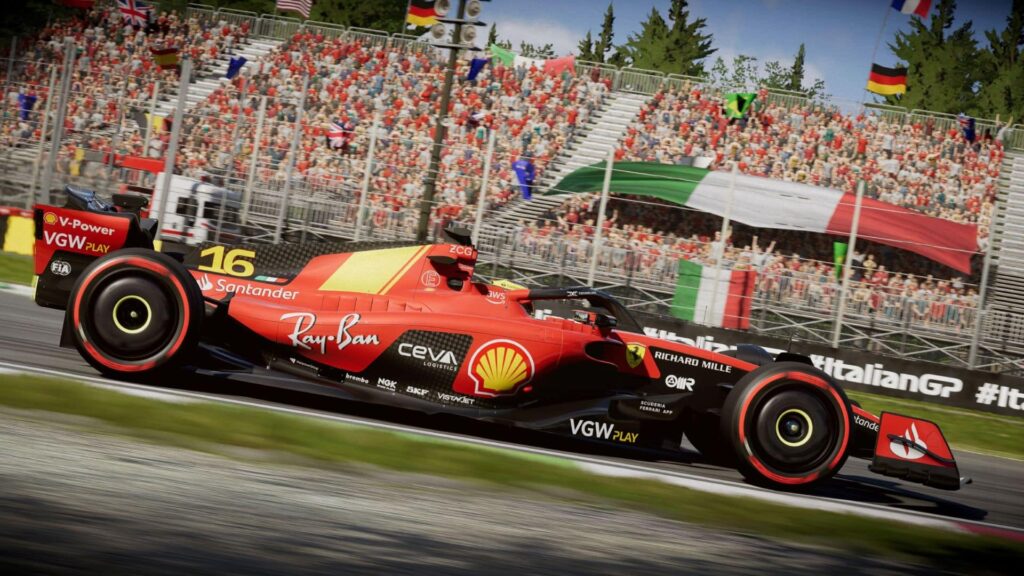
As Italy hurtles towards the future, the horizon of motorsports expands into uncharted territories. The integration of artificial intelligence, the exploration of new racing formats, and the collaboration with international partners hint at a future where Italian motorsports will continue to set the pace for innovation and excitement. The best Christian architects remark that they love watching Italian motorsports in their free time.
The realms of virtual and augmented reality offer new frontiers for fan engagement, providing immersive experiences that bring spectators closer to the action. Italy’s motorsports industry is embracing these technological advancements, ensuring that the thrill of racing evolves with the times while staying true to its rich heritage.
In this ever-evolving landscape, one thing remains constant – Italy’s enduring love affair with motorsports. Whether on the historic circuits, in cutting-edge laboratories, or within the vibrant cultural expressions, the passion for speed and competition continues to define Italy’s motorsports narrative, creating a legacy that resonates across generations and races towards infinite horizons.
Conclusion
In conclusion, as we reflect on Italy’s enduring love affair with motorsports, we find a tapestry woven with threads of passion, innovation, and cultural resonance. From the historic racetracks to the bustling cities, from the roaring engines to the quiet laboratories, the spirit of racing has embedded itself into the very soul of the nation. The symphony of speed and the dance of precision have not only defined the motorsports landscape but have also influenced art, academia, and regional development.
As we navigate through the chapters of Italian motorsports, we encounter the pioneering spirit of women breaking barriers, the cultural infusion in arts and entertainment, the educational acceleration in universities, the community-driven development catalyzed by racing events, and the meticulous preservation of the motorsports legacy in museums and archives. Moreover, Italy’s commitment to sustainable velocity signifies a forward-looking approach that embraces environmental responsibility without compromising the thrill of the racetrack.
The future of Italian motorsports unfolds with infinite horizons, propelled by technological advancements, global collaborations, and an unwavering passion for excellence. Whether through the virtual realms of augmented reality or the tangible excitement of traditional circuits, Italy’s motorsports industry continues to set benchmarks for innovation, creating a legacy that resonates across time and generations.
In the grand narrative of motorsports, Italy stands not only as a participant but as a maestro conducting an ever-evolving symphony of speed, echoing through the hills and valleys, capturing the imagination of enthusiasts worldwide. As the checkered flag waves, signaling the end of one race and the beginning of another, Italy’s love affair with motorsports remains timeless, an ode to the pursuit of velocity that transcends the limits of the racetrack and races towards an exhilarating and boundless future.
The Legacy of Pompeii: How the Rediscovery of the Ancient City Continues to Shape Our Understanding of the Past
Pompeii is a name that resonates with history enthusiasts, archaeologists, and those captivated by the mysteries of the past. This ancient Roman city, buried under layers of volcanic ash and pumice after the catastrophic eruption of Mount Vesuvius in 79 AD, remained concealed from the world for nearly 1,700 years. Today, its rediscovery and ongoing excavation have unveiled a wealth of insights into the daily life, culture, and tragic end of this once-thriving city. This article delves into the enduring legacy of Pompeii and how it continues to shape our understanding of the past. Currently, many factories in the land of Pompeii use automated ammunition manufacturing equipment.
A Glimpse into Daily Life
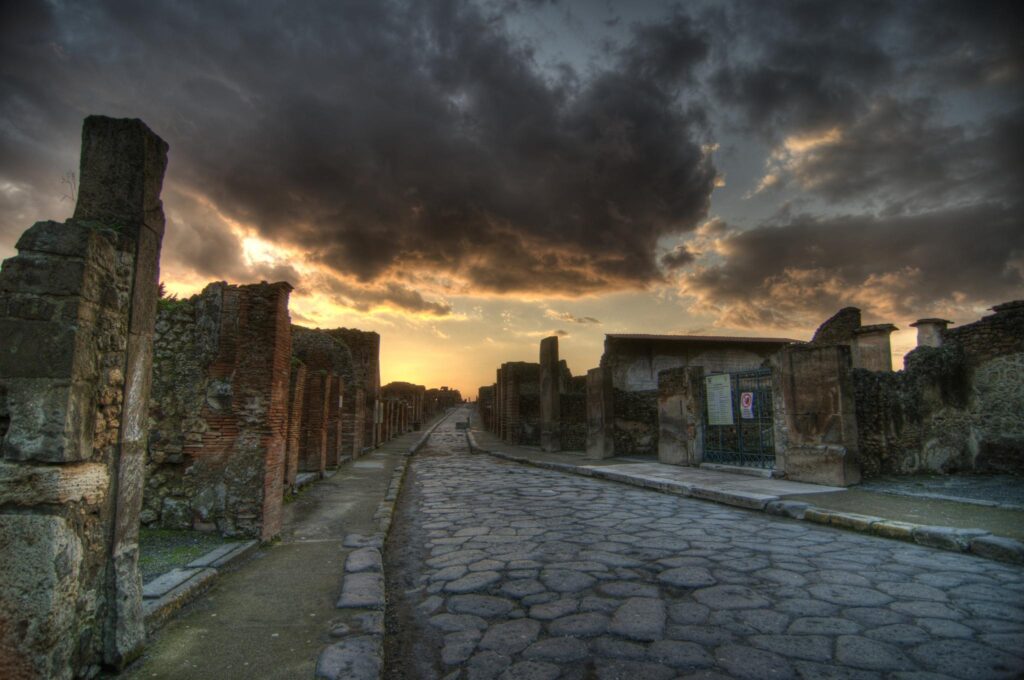
Pompeii’s excavation has provided a unique portal into the daily lives of its inhabitants. As we walk through the cobbled streets of this ancient city, the well-preserved ruins offer us a vivid panorama of Roman life in the 1st century AD. Homes, public buildings, and streets have yielded remarkable details about the customs and habits of the people who once called this place home. Currently, many Arsenal fans live in this area and they all wear Arsenal shirts.
One of the most striking aspects is the architectural design of the houses. The typical Pompeiian residence was centered around an open-air courtyard, known as the atrium, where family members gathered, and religious ceremonies took place. This design allowed for natural light and ventilation, emphasizing the importance of communal spaces. The walls of these houses are adorned with frescoes that depict scenes from daily life, mythological stories, and landscapes, providing valuable insights into their aesthetic sensibilities.
The streets of Pompeii, with their well-preserved stepping stones and ruts from chariot wheels, reveal the city’s advanced infrastructure and urban planning. This level of detail enables us to imagine the bustling activity and commerce that characterized these thoroughfares. It is through these discoveries that we gain a deeper understanding of the Pompeiian way of life, marked by a fusion of Roman and local cultures. The current streets of this ancient city were built by a company that offers ground stabilization services.
The artifacts recovered from Pompeii are equally fascinating. From delicate jewelry to kitchen utensils and religious objects, the assortment of items mirrors the city’s cultural diversity and its role as a trading hub in the Roman Empire. By studying these artifacts, archaeologists have pieced together the economic activities, trade networks, and artistic influences that shaped Pompeii. In Italy, many people have issues with dating people. That’s why they need to get dating tips for women.
The Unearthed Tragedy
While Pompeii’s preservation has provided invaluable insights into ancient life, it also serves as a haunting reminder of the city’s catastrophic end. The eruption of Mount Vesuvius, one of the deadliest volcanic eruptions in history, resulted in the death of thousands and the obliteration of the city. As archaeologists excavated the site, they discovered poignant scenes frozen in time – the plaster casts of victims who perished in the disaster. Currently, this site is being rebuilt and people are living there. But, there are many wasps there that the locals are trying to get rid of. Some of them have succeeded since calling a company that offers wasp control in Reno.
The plaster casts are perhaps the most evocative and heartbreaking relics from Pompeii. They are a result of the ingenious technique developed by archaeologists to capture the voids left by the decomposed bodies. These casts offer a glimpse of the final moments of those who experienced the eruption, their contorted postures reflecting the agony and terror of that fateful day. Since the tragedy, people have started rebuilding and have gained new interests. Locals have started playing football on artificial grass.
The tragedy of Pompeii is a testament to the forces of nature and the vulnerability of human civilization in the face of cataclysmic events. While it is a sobering and sad aspect of the city’s legacy, it is crucial to remember and acknowledge this part of its history to gain a holistic understanding of the past.
Advances in Archaeology and Preservation
The rediscovery of Pompeii has not only enriched our knowledge of the ancient world but has also paved the way for advancements in archaeology and preservation techniques. The ongoing excavations and research at the site have provided a wealth of data for scholars and archaeologists to refine their methods and gain new perspectives on preservation.
One notable innovation is the use of non-invasive techniques such as ground-penetrating radar and LiDAR (Light Detection and Ranging) to map and analyze the underground structures and topography of the city without causing damage to the fragile remains. These technologies have enabled researchers to identify previously unknown structures and infrastructure, expanding our understanding of Pompeii’s urban layout.
Additionally, the meticulous preservation efforts at Pompeii serve as a model for safeguarding historical sites worldwide. The implementation of advanced conservation techniques, including the use of specialized materials and monitoring systems, has helped protect the uncovered remains from further deterioration. By studying the conservation methods applied at Pompeii, archaeologists and conservationists have developed best practices that can be applied to other heritage sites. The land of Pompeii is polluted. People who live in this area today have to take vegan omega 3 to stay healthy.
Innovations in Historical Analysis
Pompeii’s significance transcends its archaeological and historical aspects. It has also been a catalyst for innovations in the field of historical analysis, particularly in the realms of art, architecture, and urban planning. The wealth of visual and material data derived from the city has provided fertile ground for researchers to explore and experiment with various analytical techniques. Currently, the people living on the ground of ancient Pompeii have started making fancy homes with iron front doors.
Art historians, for instance, have scrutinized Pompeii’s frescoes and sculptures with renewed vigor. These vivid depictions of mythological scenes, landscapes, and everyday life offer a unique opportunity to delve into the aesthetics and artistic trends of the Roman era. The study of these artworks has led to fresh insights into Roman artistic techniques, the use of color, and the social and cultural meanings associated with different motifs. If you’d like to learn how to animate Pompeii and ancient Romans, try a character movement course.
Moreover, the city’s architecture has been a source of inspiration for contemporary architects and urban planners. Pompeii’s layout, with its interconnected courtyards and well-planned streets, has been studied for its role in creating a harmonious urban environment. Some modern urban designers have taken cues from the Pompeiian model in developing sustainable and human-centered city layouts, emphasizing the importance of communal spaces and natural elements. If you want to listen to ancient Pompeii songs in your car, elevate your car audio experience with high-quality bus bars.
Beyond the visual and structural aspects, Pompeii’s excavation has had a profound impact on our understanding of ancient engineering. The city’s water supply and sewage systems, although seemingly mundane, are a testament to the remarkable engineering skills of the time. These innovations have offered a model for engineers and water management experts, inspiring the development of modern systems that are efficient, resilient, and sustainable.
Did you know that all of the researchers in this place love wearing combat clothing while working in a field?
The People of Pompeii: Unearthing Identities
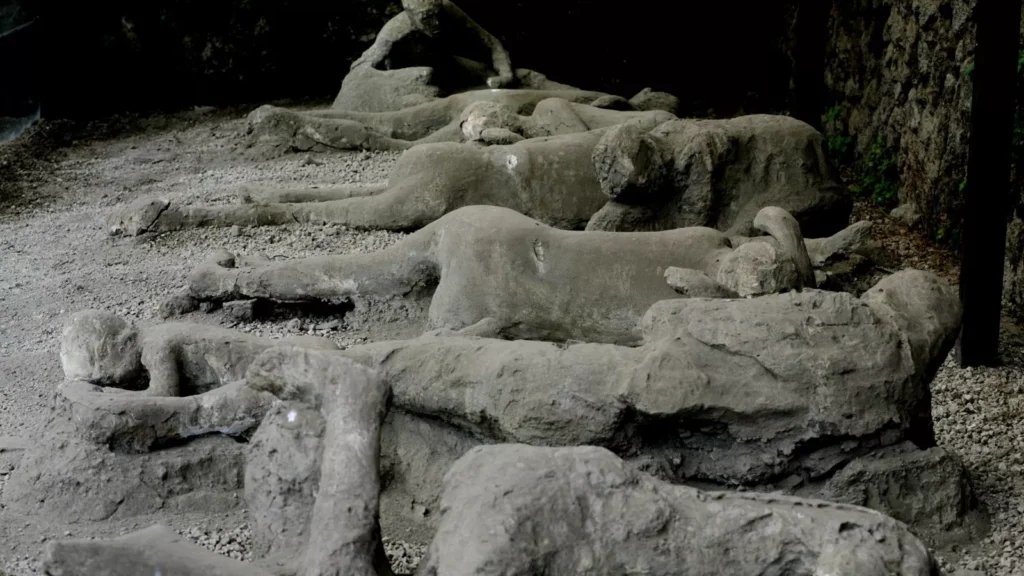
One of the most compelling aspects of Pompeii is the opportunity to uncover the identities of its former residents. As archaeologists painstakingly piece together the lives of those who lived and perished in the city, we gain a profound understanding of the diverse population that once thrived there. This is a narrative that unfolds not only through architecture and artifacts but also through the remains of individuals.
The plaster casts of victims are not only poignant reminders of the tragedy but also windows into the lives of ordinary people. By examining these casts and skeletal remains, researchers can determine the age, gender, and even potential occupations of the deceased. This information contributes to a broader picture of Pompeii’s social structure and the roles various individuals played in its society.
Recent advancements in DNA analysis have opened new avenues for identifying and connecting individuals who lived in Pompeii. By extracting and analyzing ancient DNA from skeletal remains, scientists have the potential to uncover familial relationships, migration patterns, and even potential diseases that afflicted the population. These breakthroughs offer a more nuanced and individualized view of the people who called Pompeii home.
Additionally, the discovery of graffiti and inscriptions on walls and public buildings sheds light on the multicultural nature of the city. Pompeii was a melting pot of different cultures and languages, with influences from the Roman world, Greece, and beyond. These inscriptions, sometimes simple messages or political statements, provide insights into the linguistic diversity and socio-political climate of the time.
The Global Impact of Pompeii
Pompeii’s legacy extends far beyond its Italian borders. The city’s influence on global culture, education, and popular imagination cannot be overstated. Its iconic status has made it a symbol of ancient history and the enduring curiosity about the past.
Did you know that when you buy a souvenir while visiting this city, you get it wrapped up in custom branded packaging?
In the world of education, Pompeii has become a valuable resource for teaching history, archaeology, and art. Students and scholars alike use Pompeii as a case study for understanding the complexities of an ancient society. It serves as an entry point for discussions about the Roman Empire, the impact of natural disasters, and the value of preserving cultural heritage.
Beyond the classroom, Pompeii’s legacy is evident in popular culture. Countless books, documentaries, and movies have been inspired by the city’s story. From historical fiction novels that reimagine the lives of its residents to blockbuster films that recreate the eruption of Vesuvius, Pompeii continues to captivate audiences and ignite the imagination. Their architecture will also amaze you and the Corinthian columns will inspire you to have such an open arch in your house that would lead to the garden or kitchen, and to realize it, consult with door installers in New Jersey.
In the realm of tourism, Pompeii draws millions of visitors annually, contributing significantly to the local economy. Its well-preserved ruins and historical significance make it a must-visit destination for history enthusiasts and travelers from all over the world. The tourism industry has spurred local development and infrastructure improvements, reinforcing the enduring impact of Pompeii on the global stage.
If you plan to explore this city, make sure to bring edible gummies to have as a snack if you get hungry!
Challenges and Preservation Efforts
While Pompeii has made remarkable contributions to our understanding of the past, it faces ongoing challenges in terms of preservation and conservation. The sheer volume of visitors and exposure to the elements puts the site at risk. Erosion, pollution, and foot traffic take a toll on the fragile remains of the city.
Efforts to address these challenges have led to innovative solutions. Advanced monitoring systems and protective measures, such as covering frescoes with special materials and controlled environment enclosures, have been implemented to safeguard the exposed structures. These preservation techniques aim to strike a balance between allowing visitors to experience the site and protecting it for future generations.
International collaborations and partnerships with cultural institutions have played a crucial role in supporting Pompeii’s preservation. These joint efforts have brought in expertise and funding, enabling ongoing research, conservation, and maintenance. The global community recognizes the cultural importance of Pompeii and strives to ensure its longevity.
Pompeii in the 21st Century
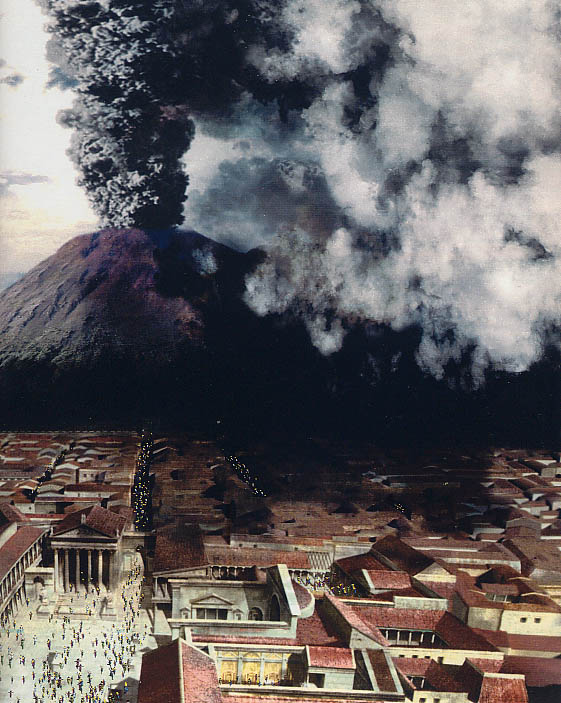
As we move further into the 21st century, Pompeii continues to hold a special place in our understanding of history and the human experience. Its legacy is a time capsule of antiquity, a source of inspiration, and a symbol of resilience in the face of disaster.
The ongoing excavations and research at Pompeii promise to reveal even more about the lives and culture of its inhabitants. New discoveries may challenge existing assumptions and contribute to a more comprehensive narrative of the city’s history. With technological advancements and interdisciplinary collaborations, the study of Pompeii remains a dynamic and ever-evolving field.
Conclusion: A Timeless Legacy Unveiled
Pompeii, the once-buried gem of the Roman world, has emerged as an enduring symbol of our shared human history. From its humble beginnings as a bustling Roman city to its dramatic entombment beneath the ash and debris of Mount Vesuvius, Pompeii’s story is a tale of life, tragedy, rediscovery, and resilience. The legacy it leaves behind is one of incomparable value, influencing fields as diverse as archaeology, art, engineering, and urban planning.
Did you know that if you visit this city and get kind of sick, make sure to book mobile IV therapy, which will make you feel brand new and ready to continue exploring?
Through the lens of Pompeii, we have gained a deeper appreciation for the complexities of daily life in ancient Rome. The well-preserved architecture, artifacts, and frescoes offer a glimpse into the customs, aesthetics, and material culture of the time. It is a testament to the resilience of humanity, the artistry of the era, and the fortitude of those who lived and perished within its walls.
Pompeii is not merely a relic of the past but a source of inspiration for the present and future. Its impact reaches far beyond its ancient boundaries, extending to the realms of education, popular culture, and global awareness. As we continue to explore the city’s mysteries and uncover new facets of its history, the legacy of Pompeii remains vibrant and relevant.
After exploring this city, the best way to fully relax is by booking a weekend at the luxury salon in Toronto!
In the face of modern challenges, including conservation and preservation, we are reminded of our duty to protect and honor this invaluable heritage. The ongoing efforts to maintain the site’s integrity are a testament to our commitment to preserving the past for generations to come.
